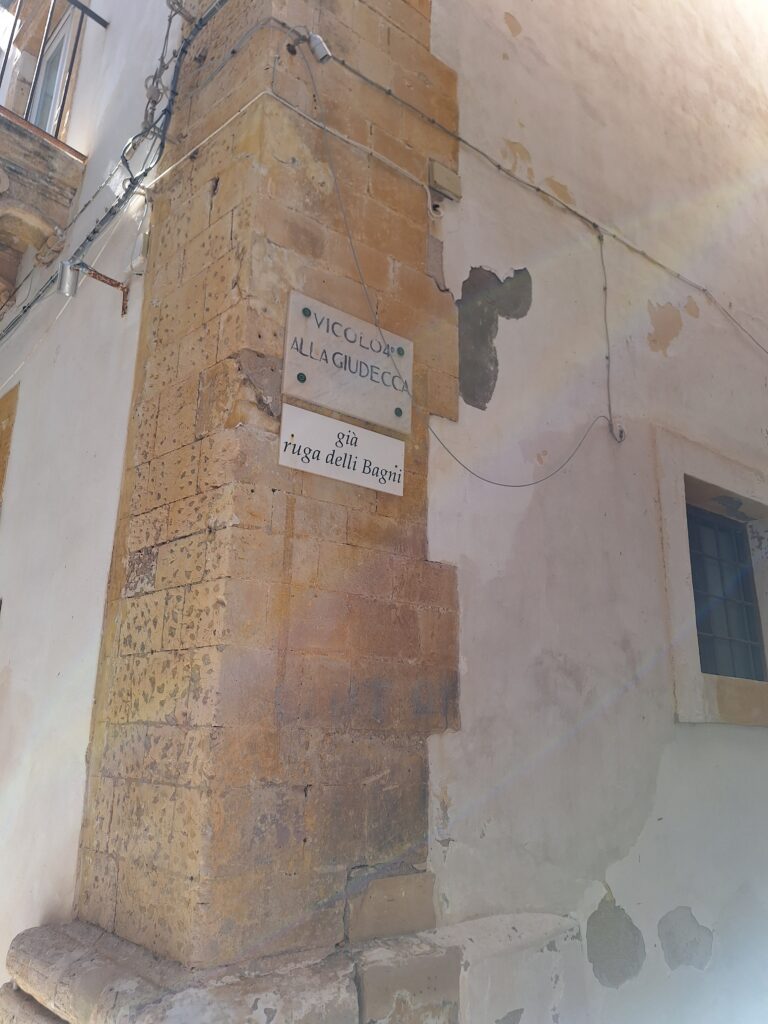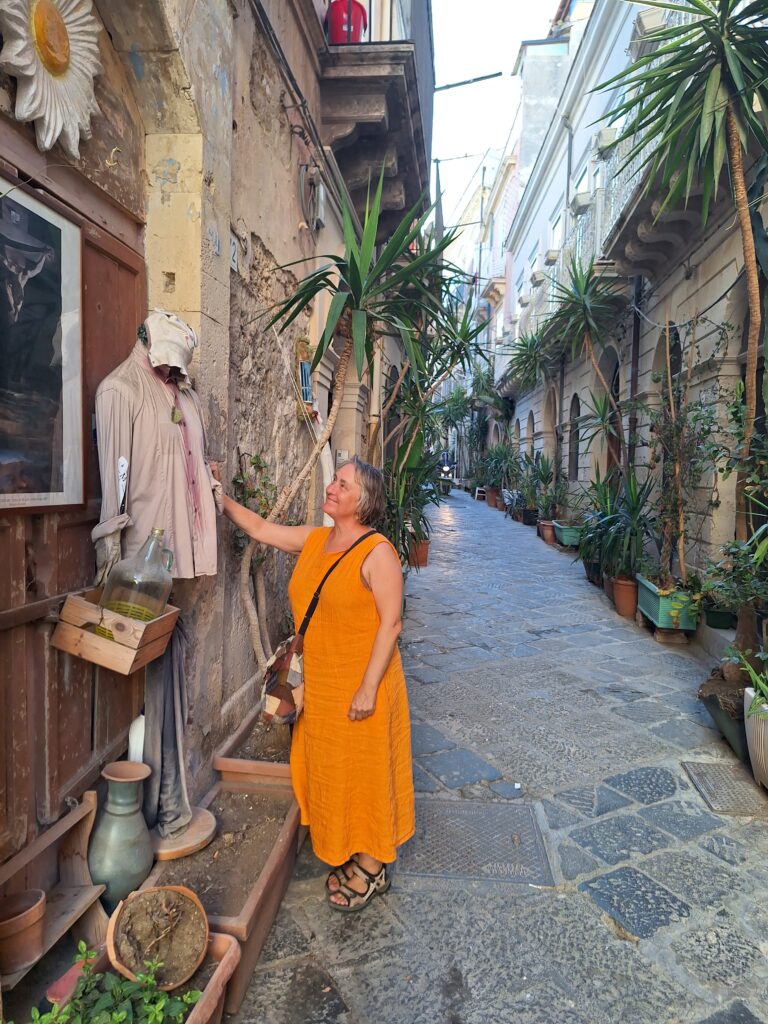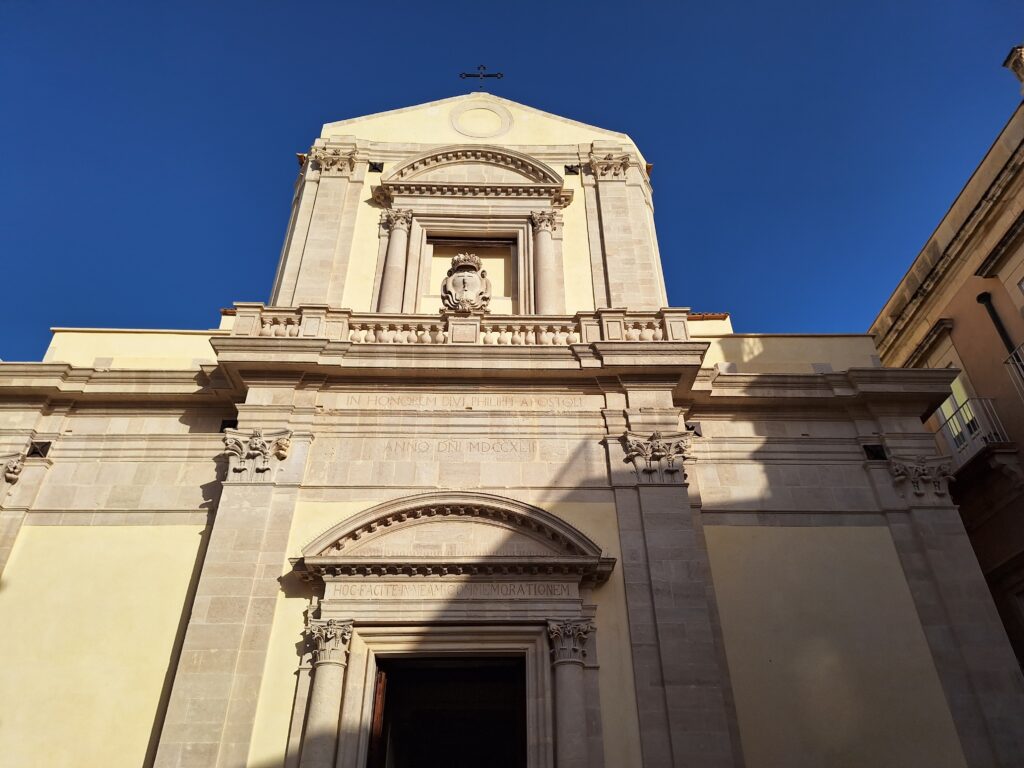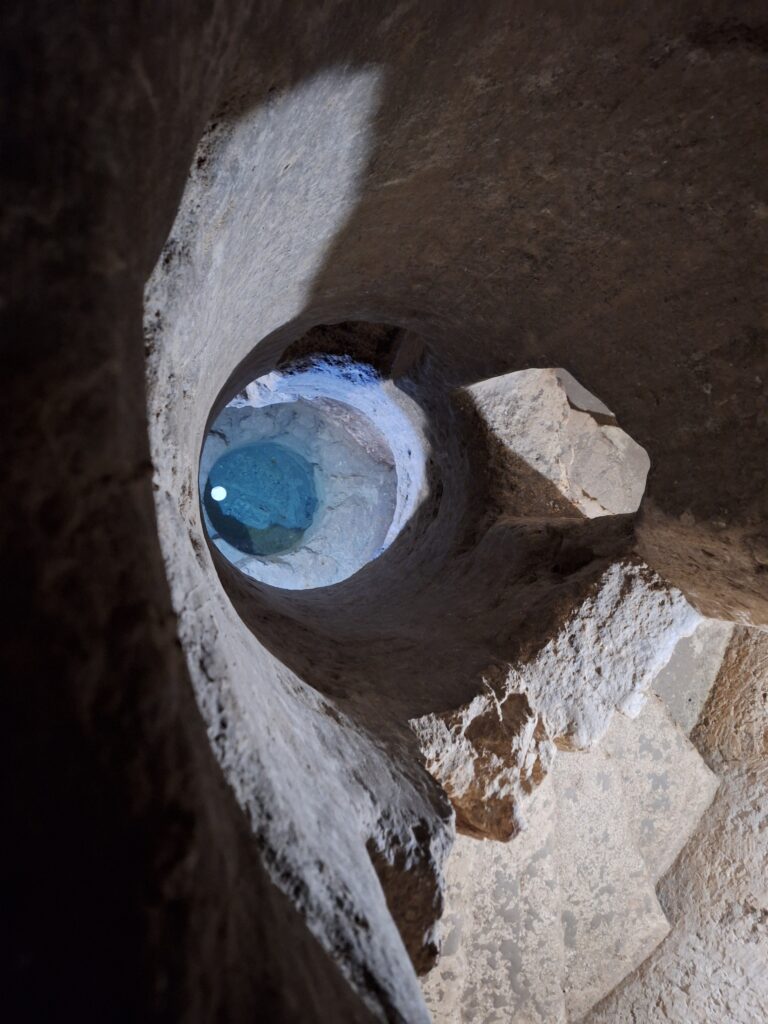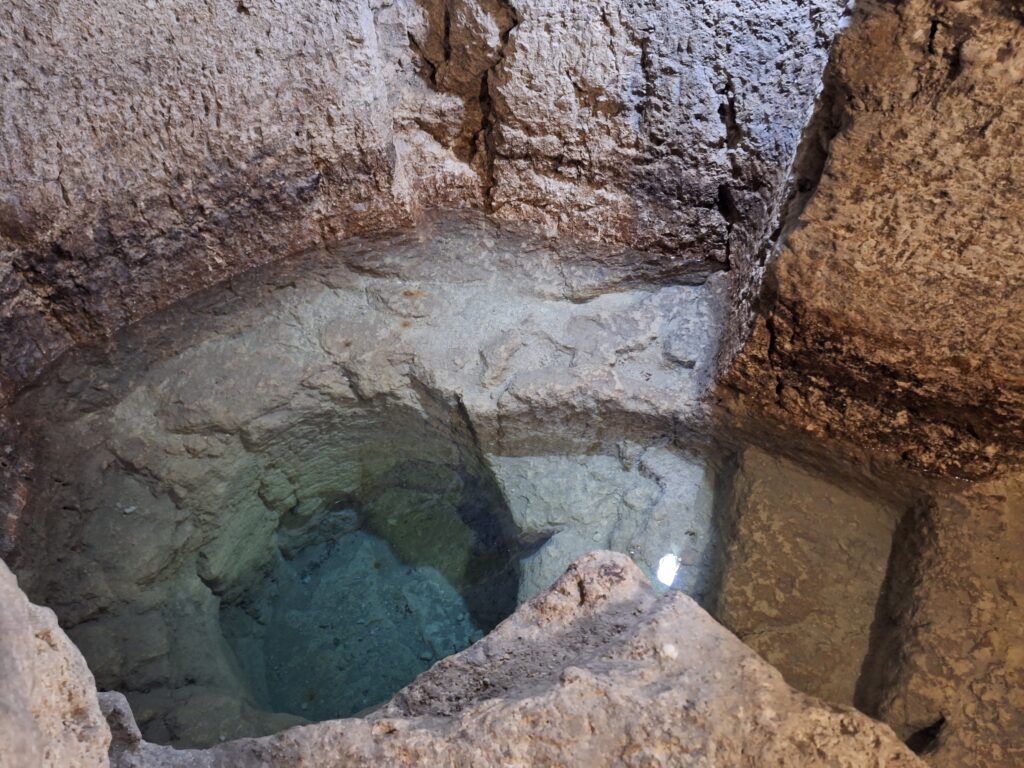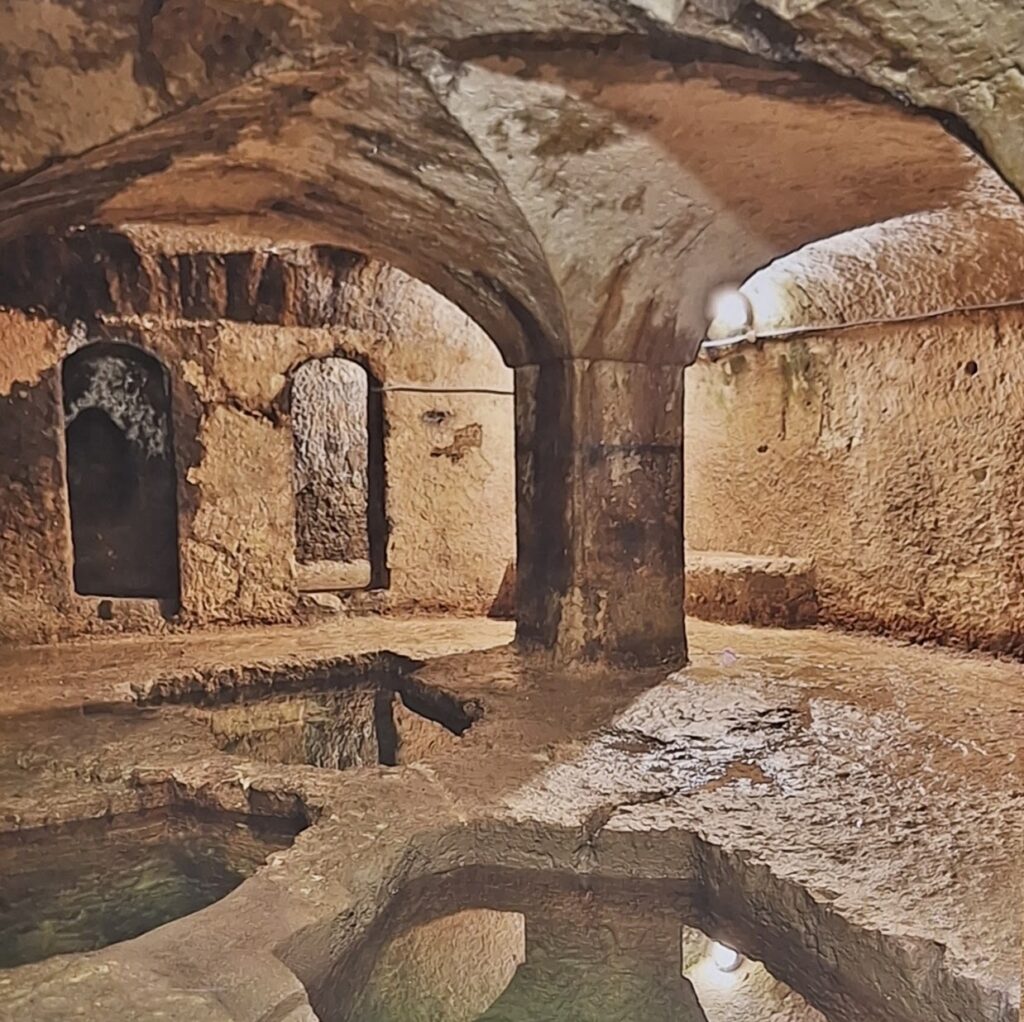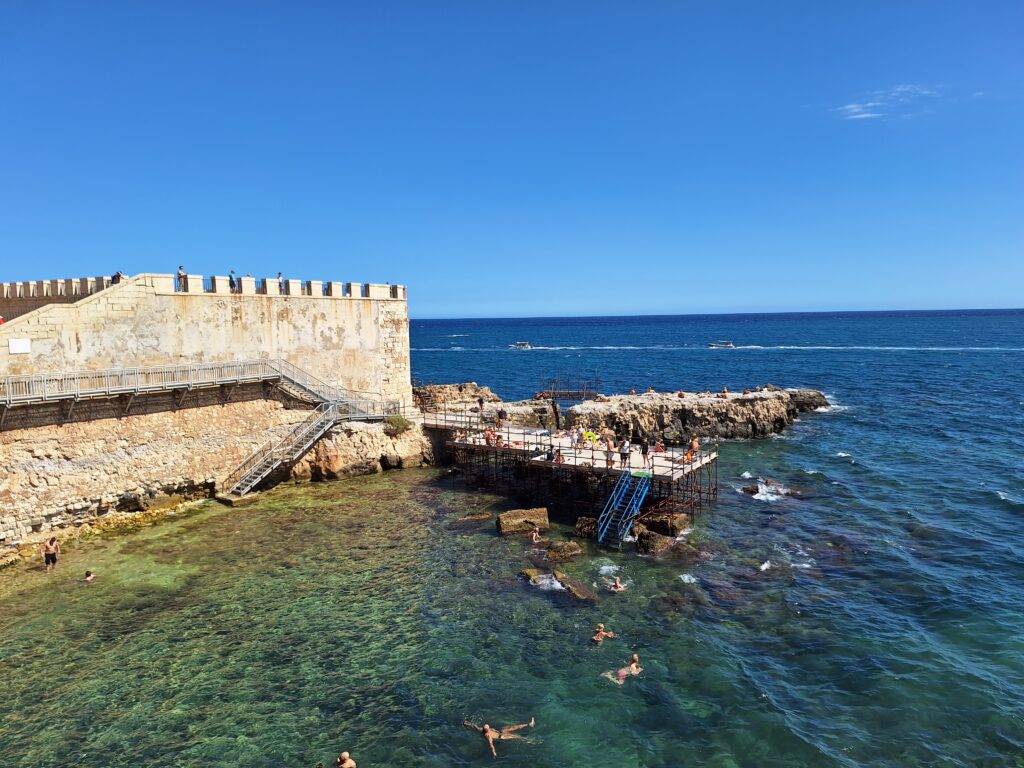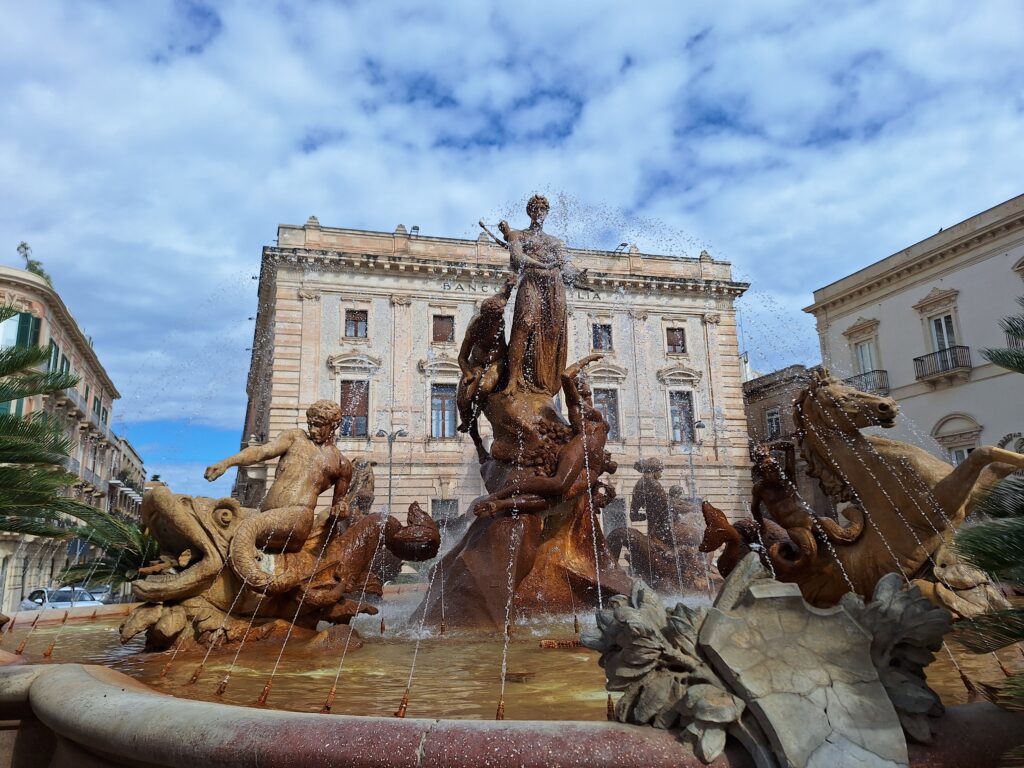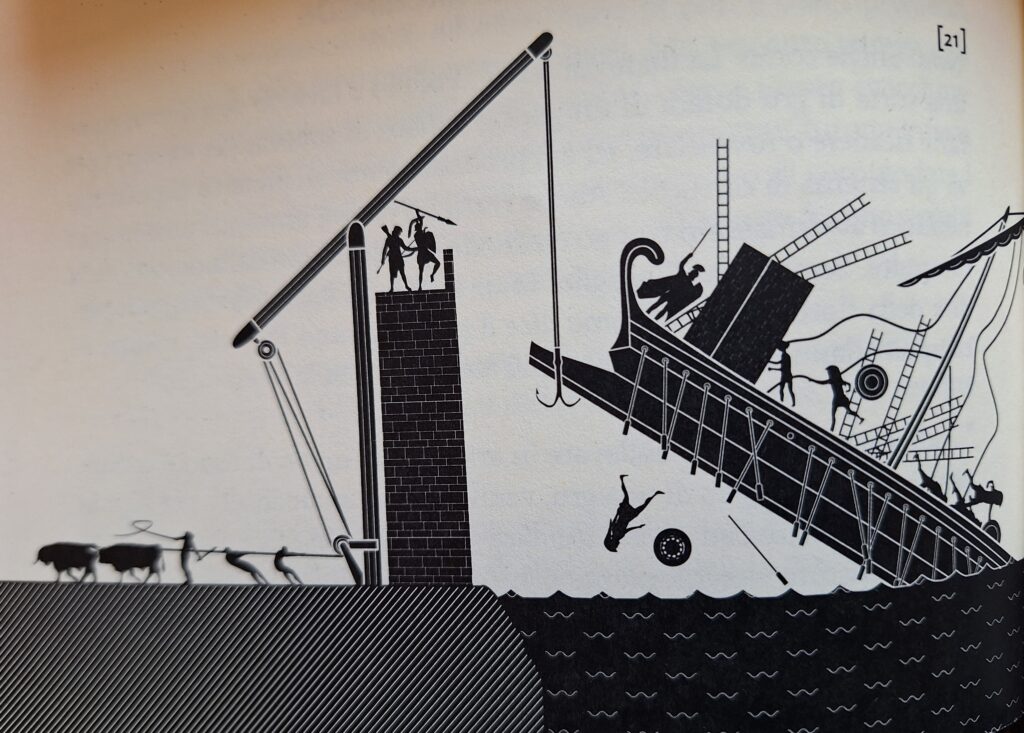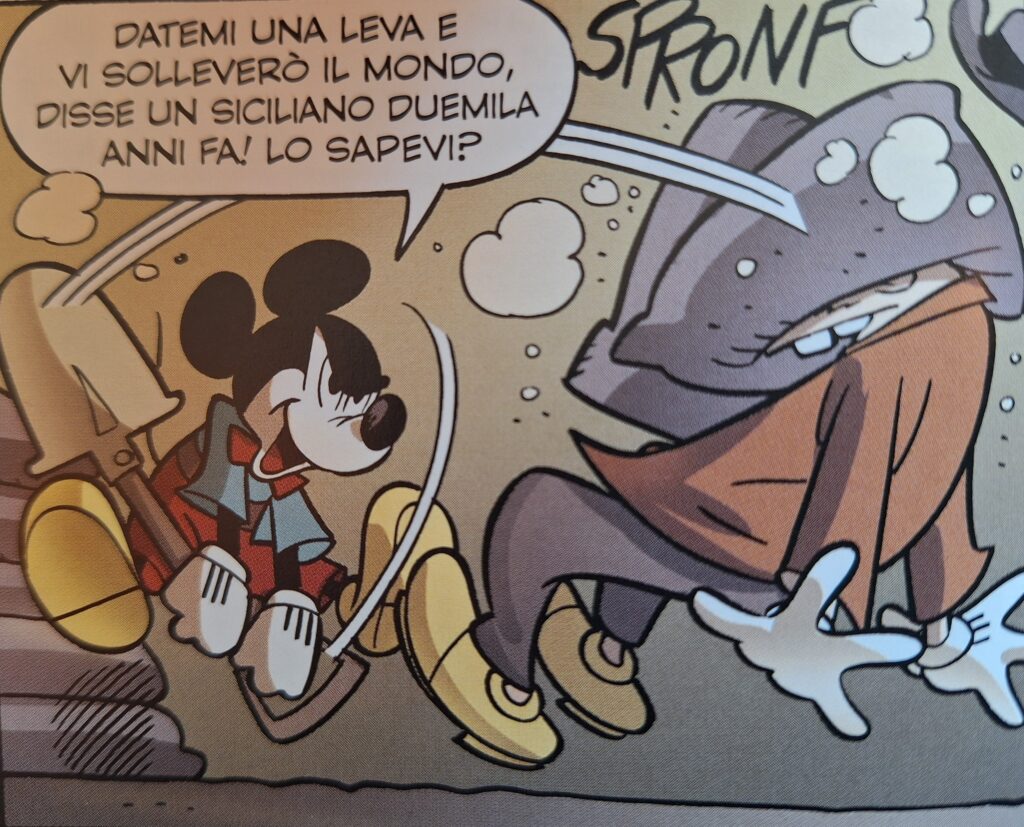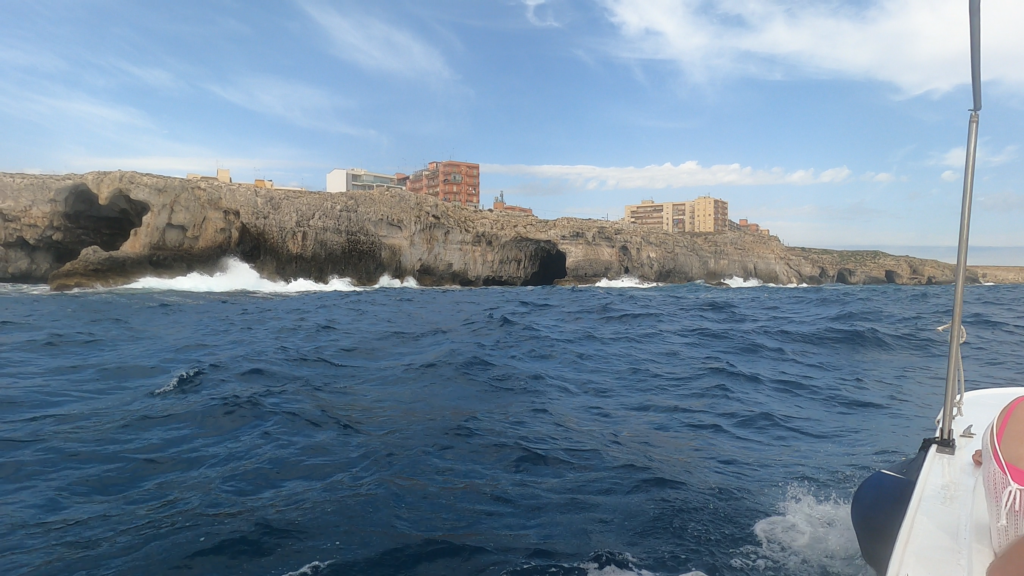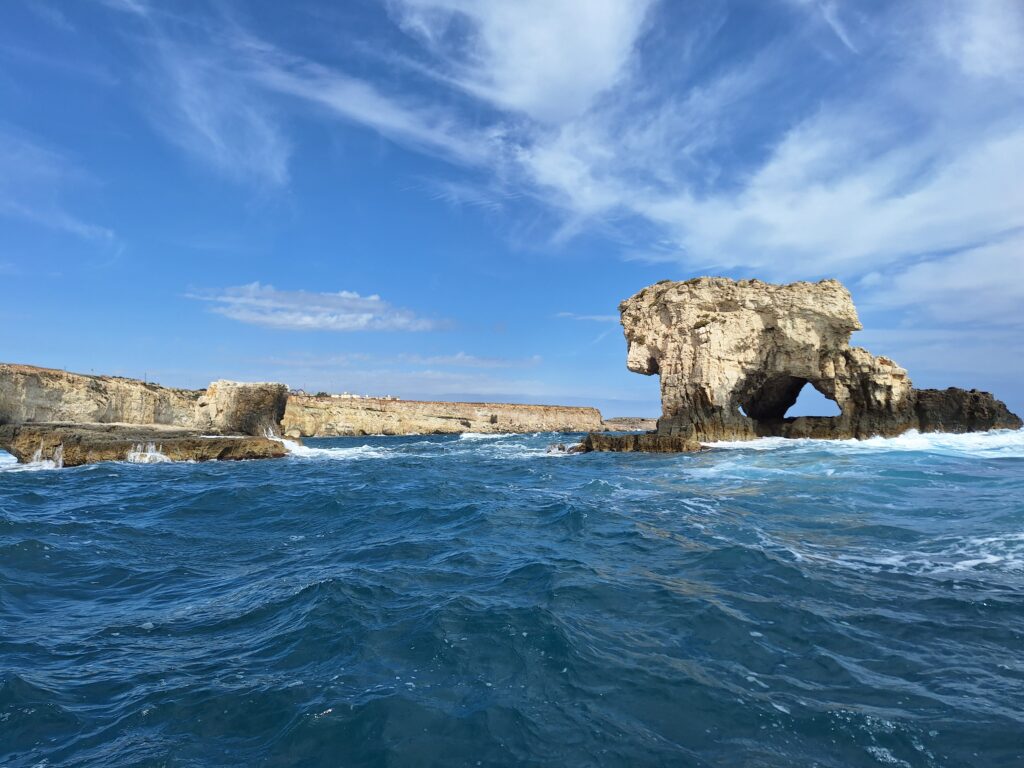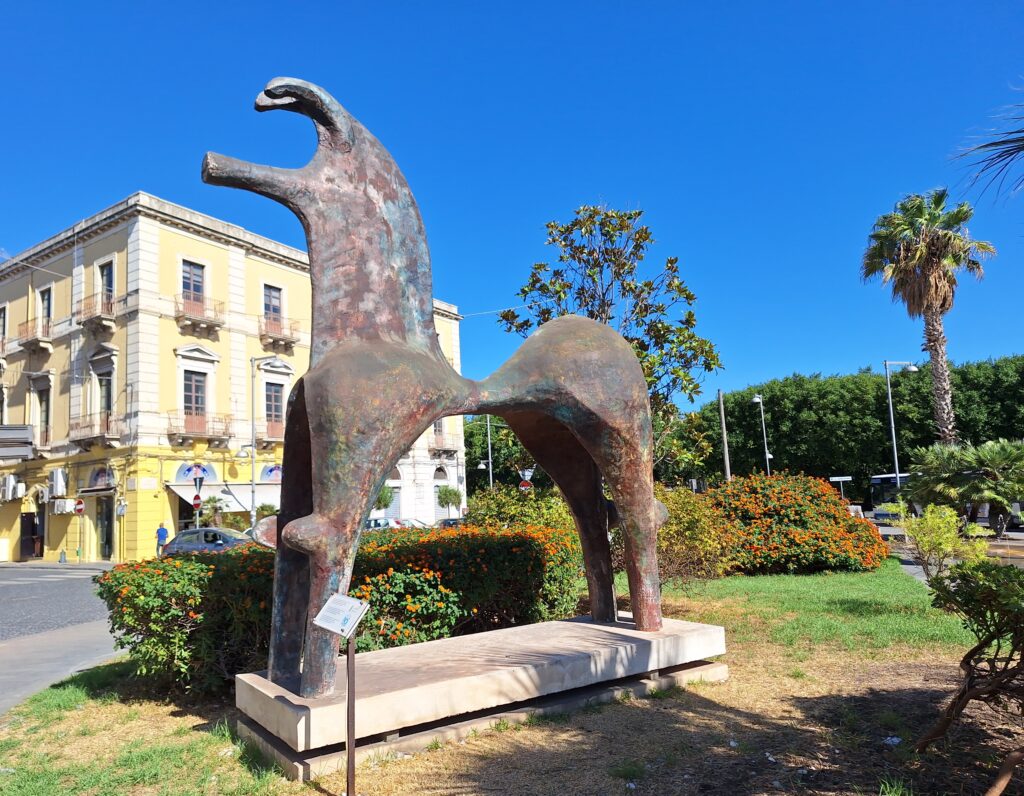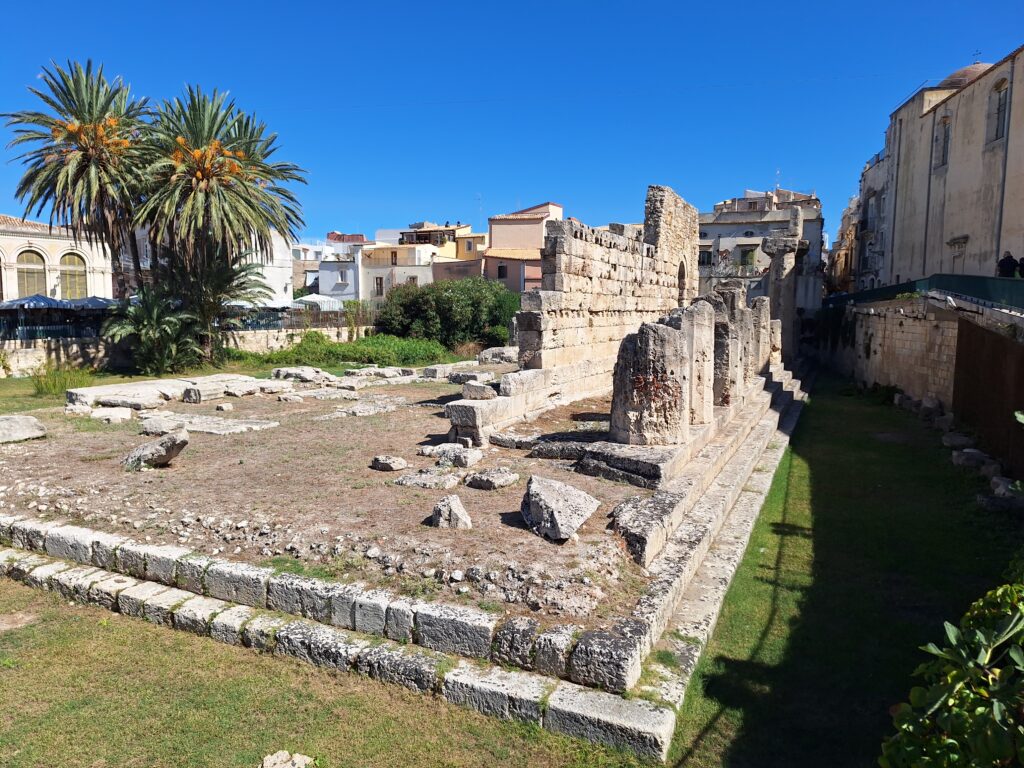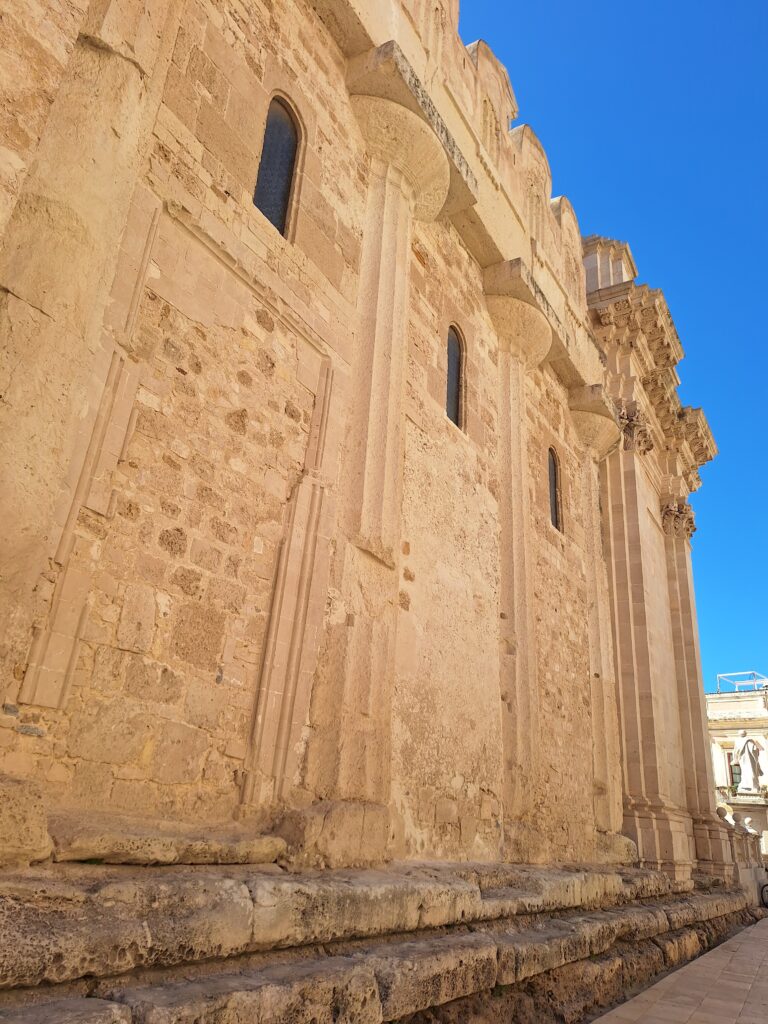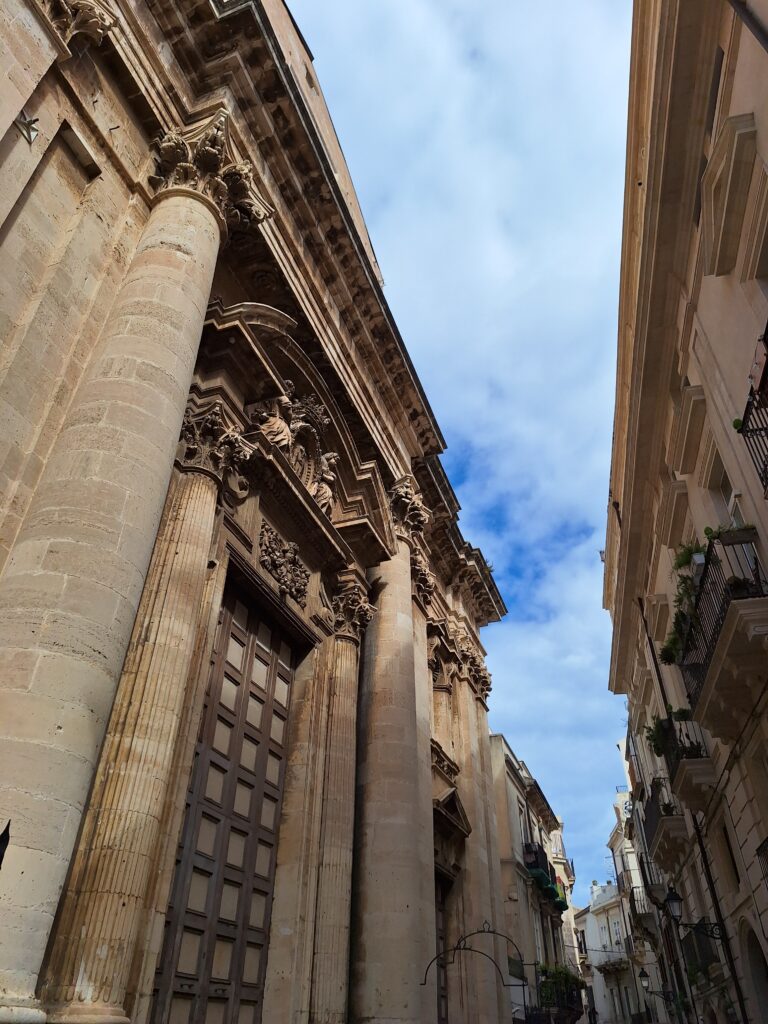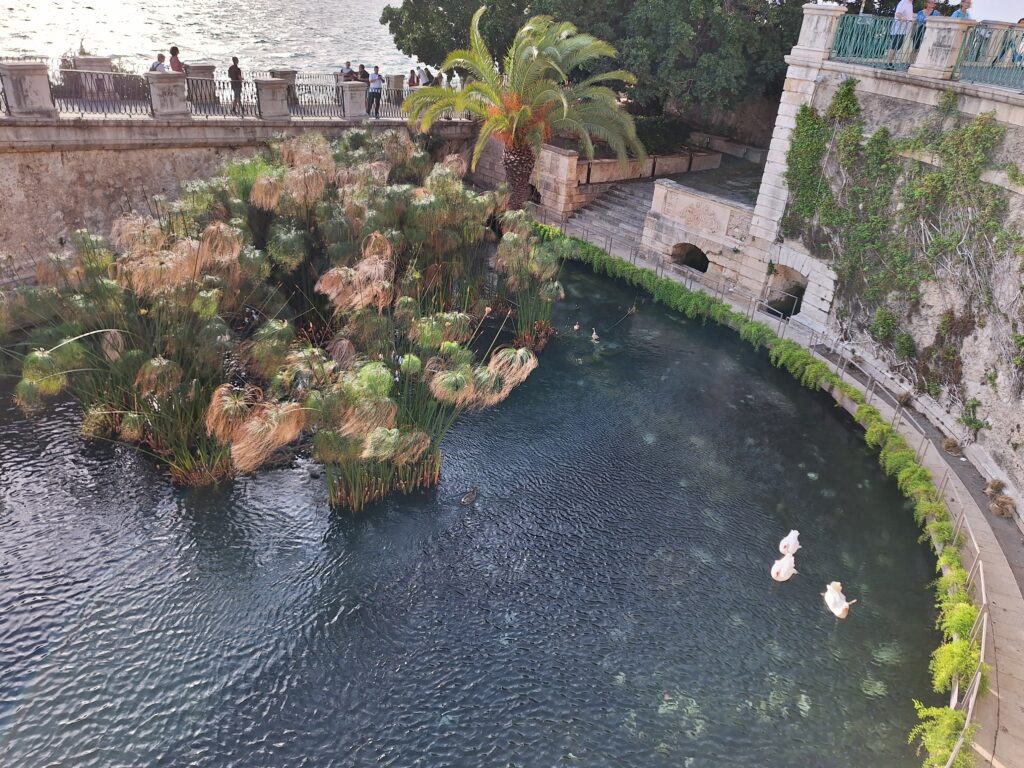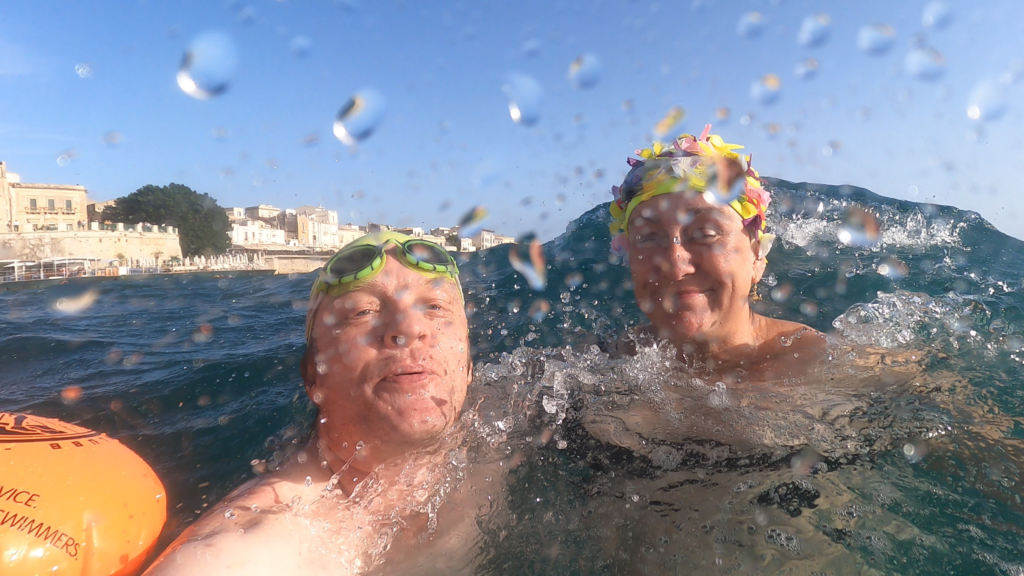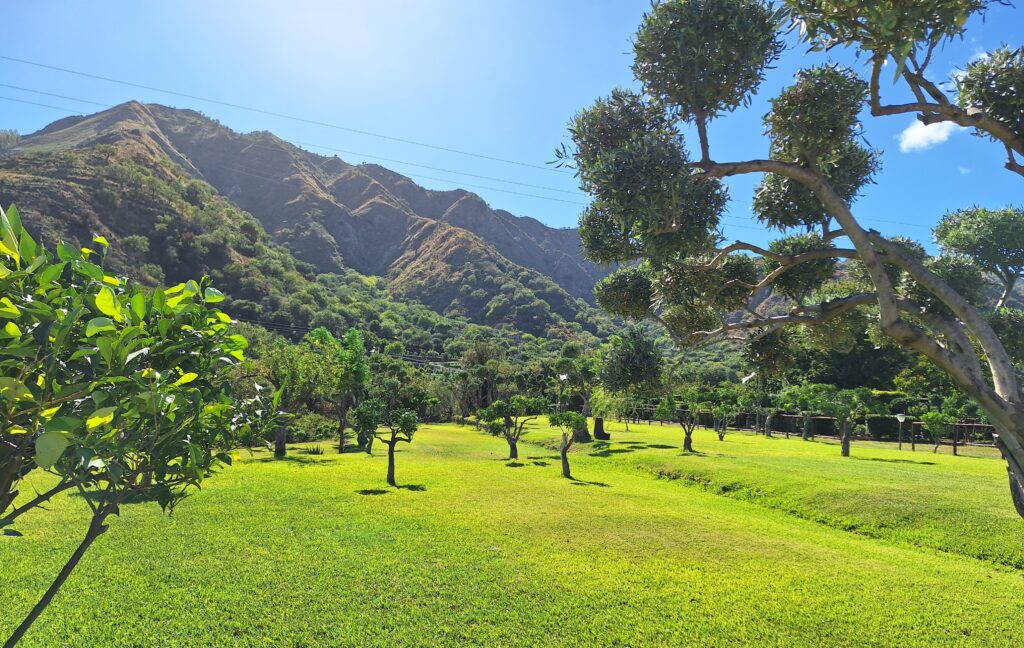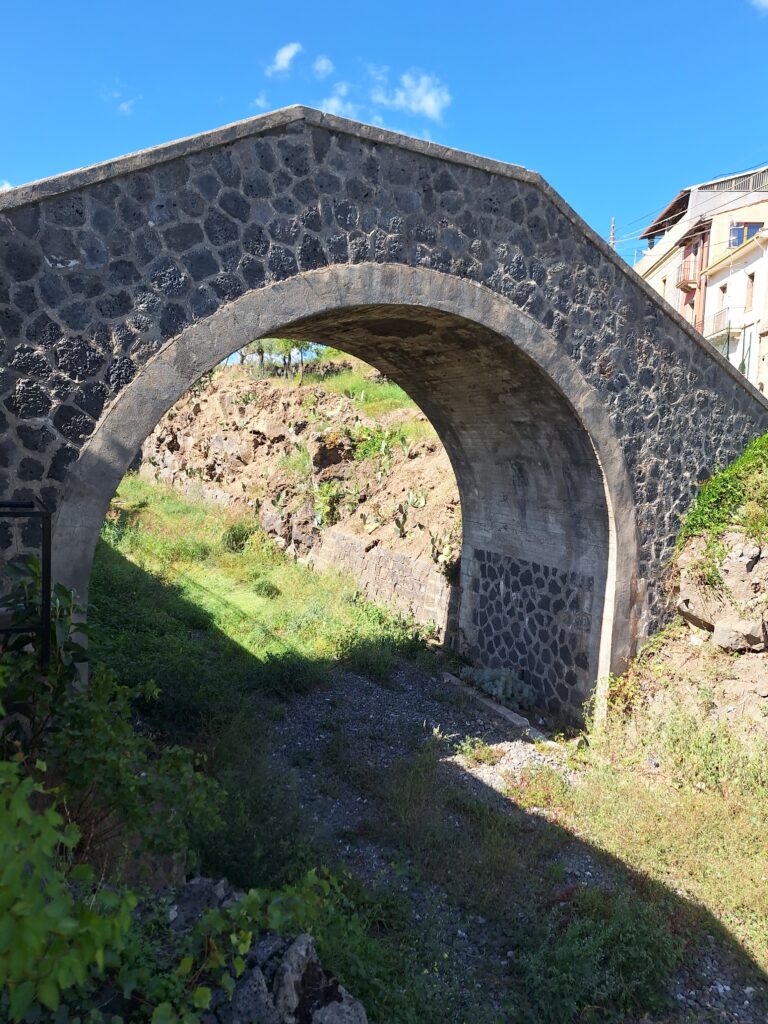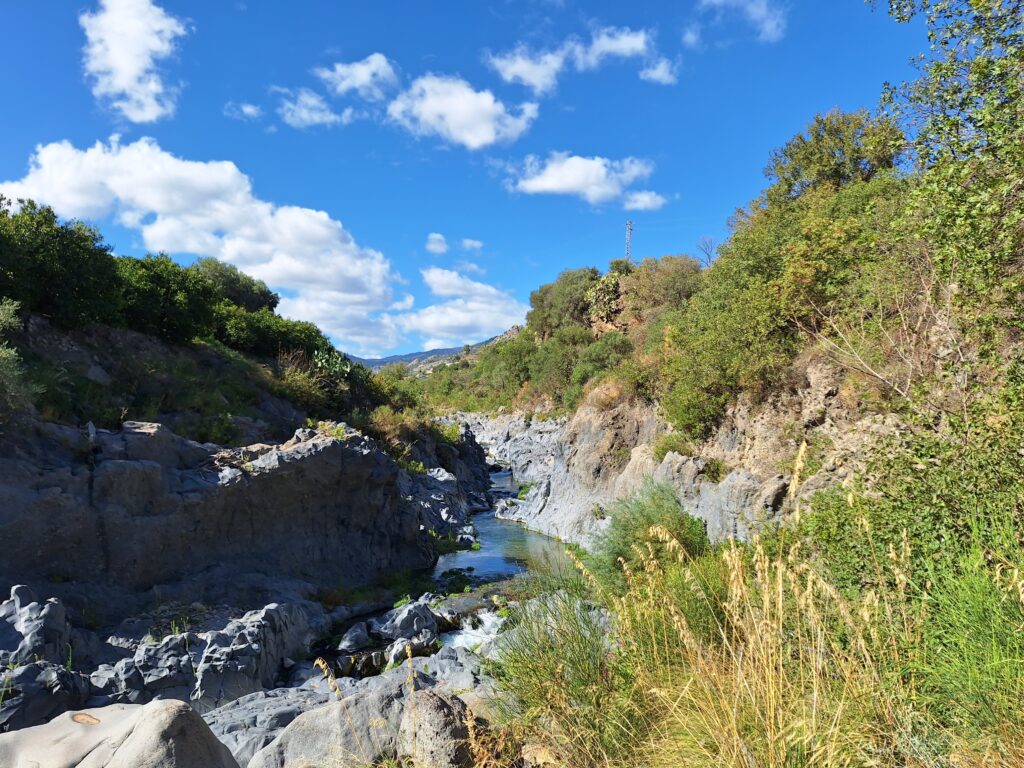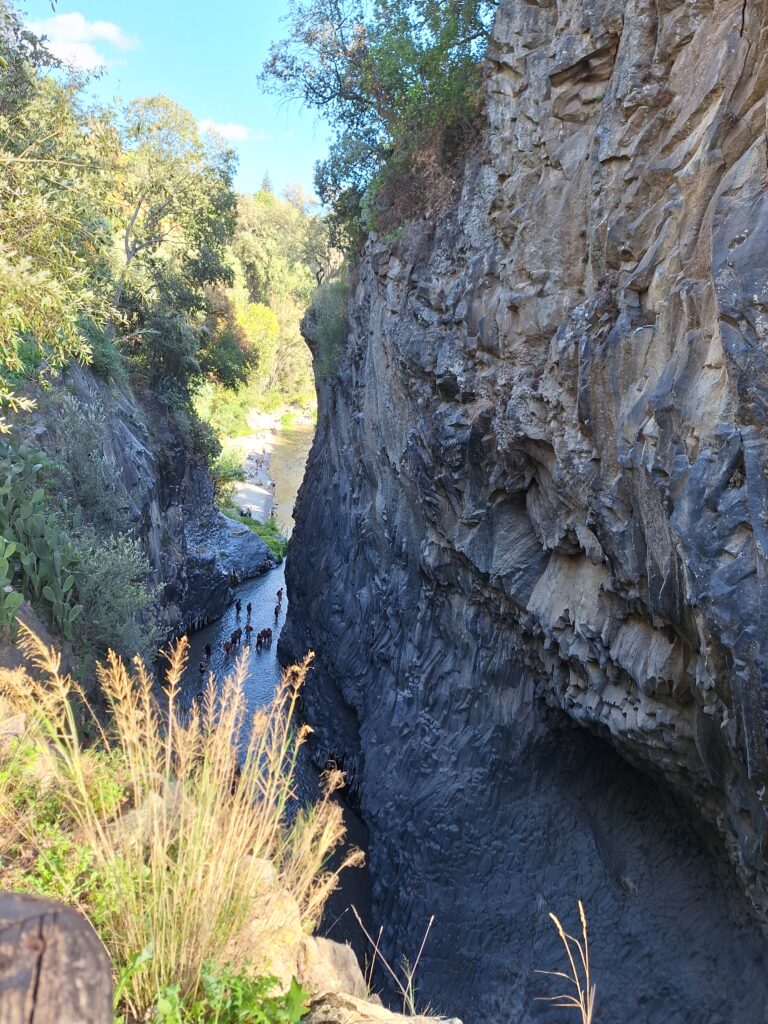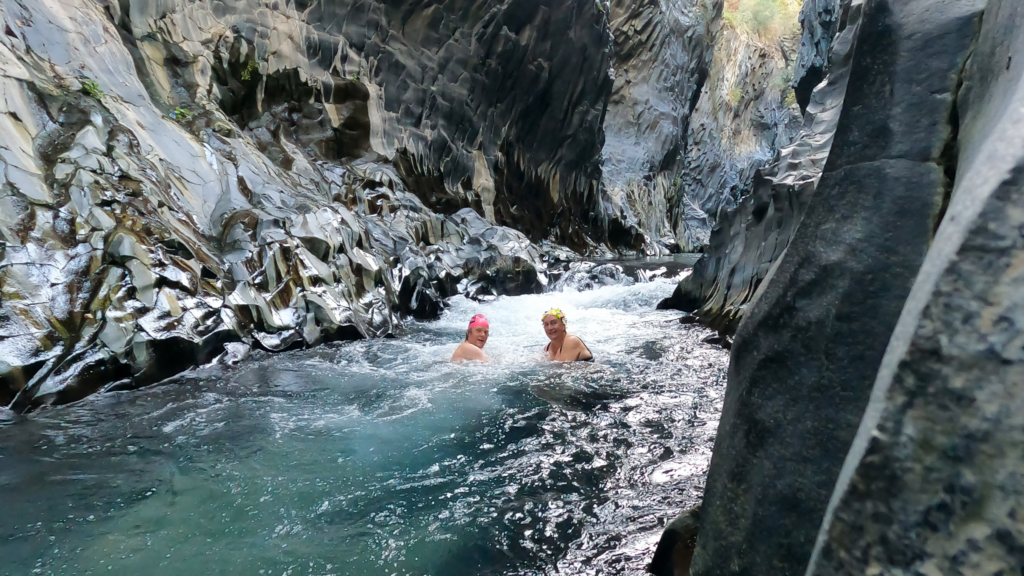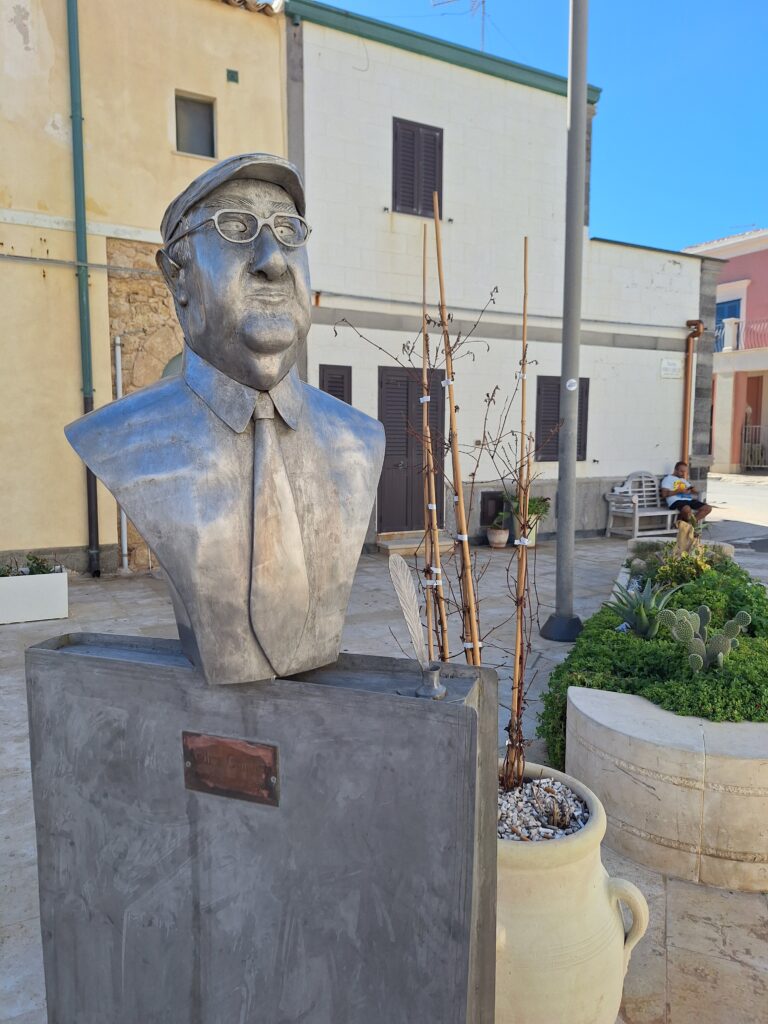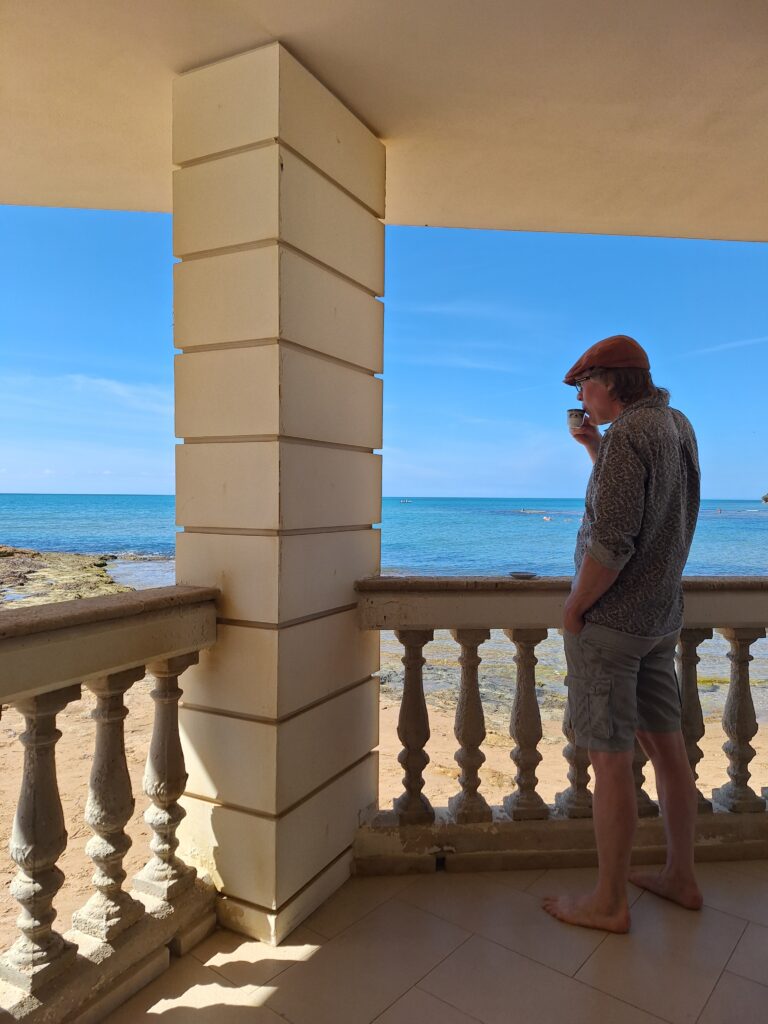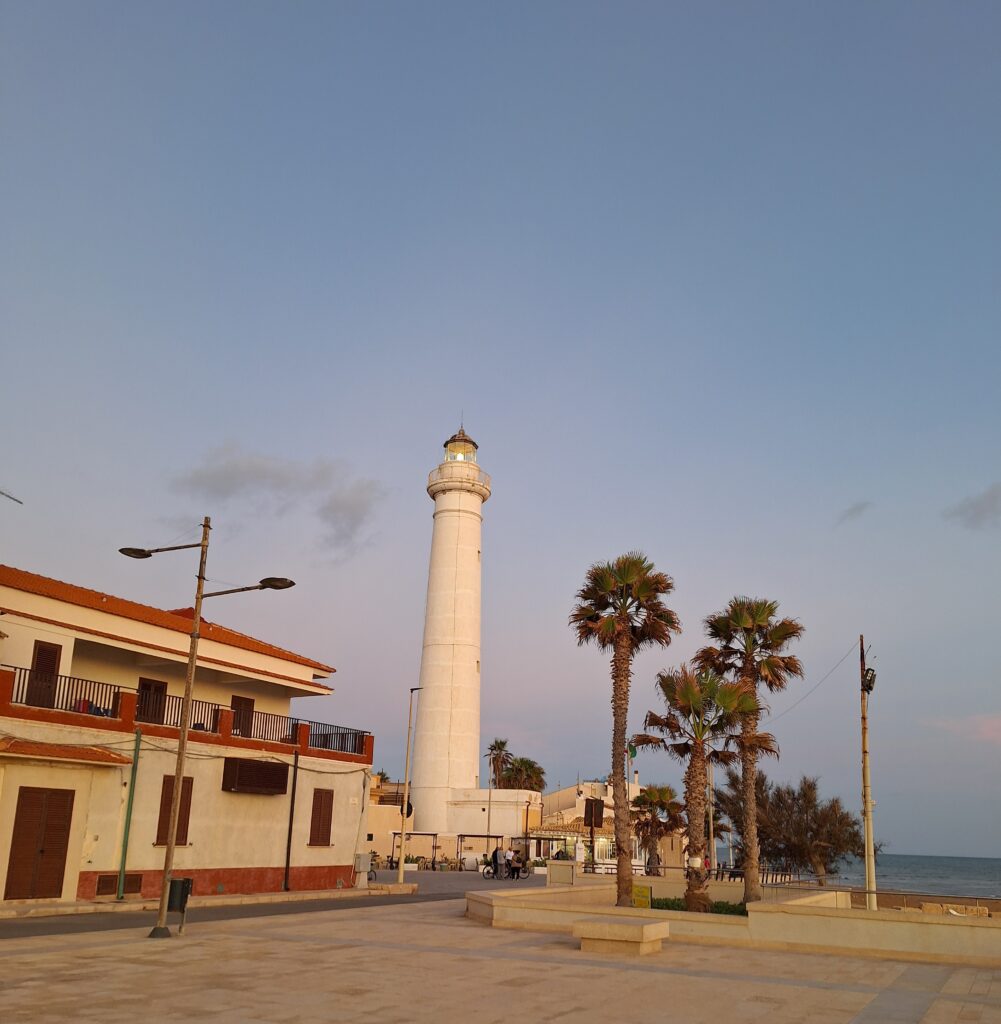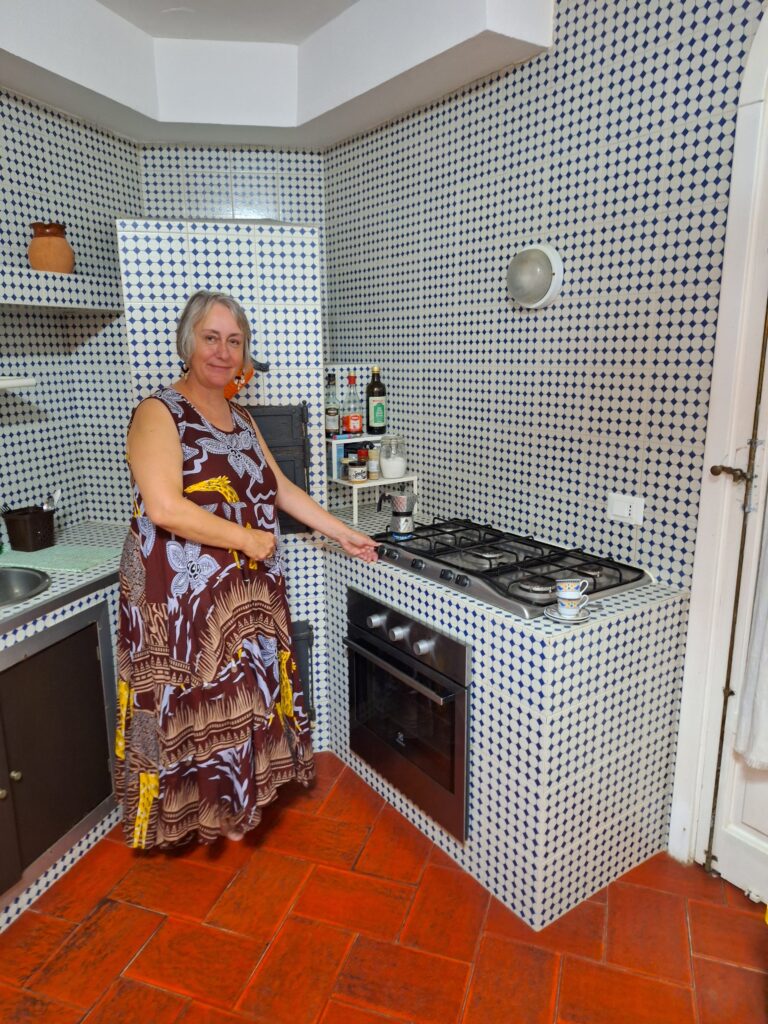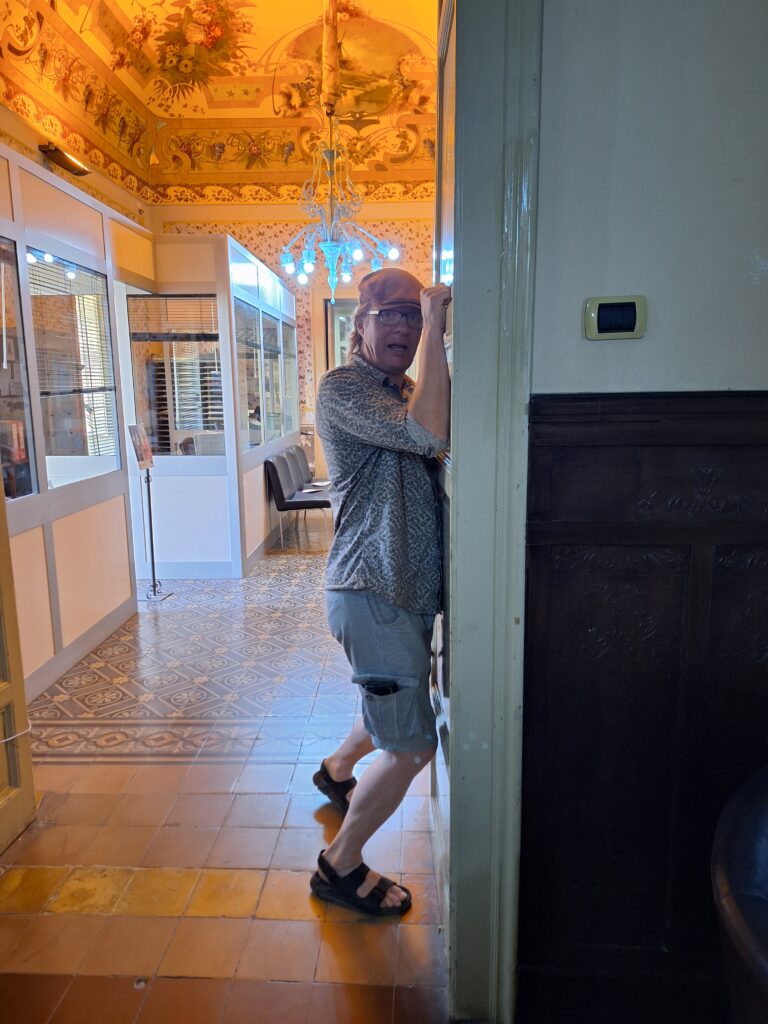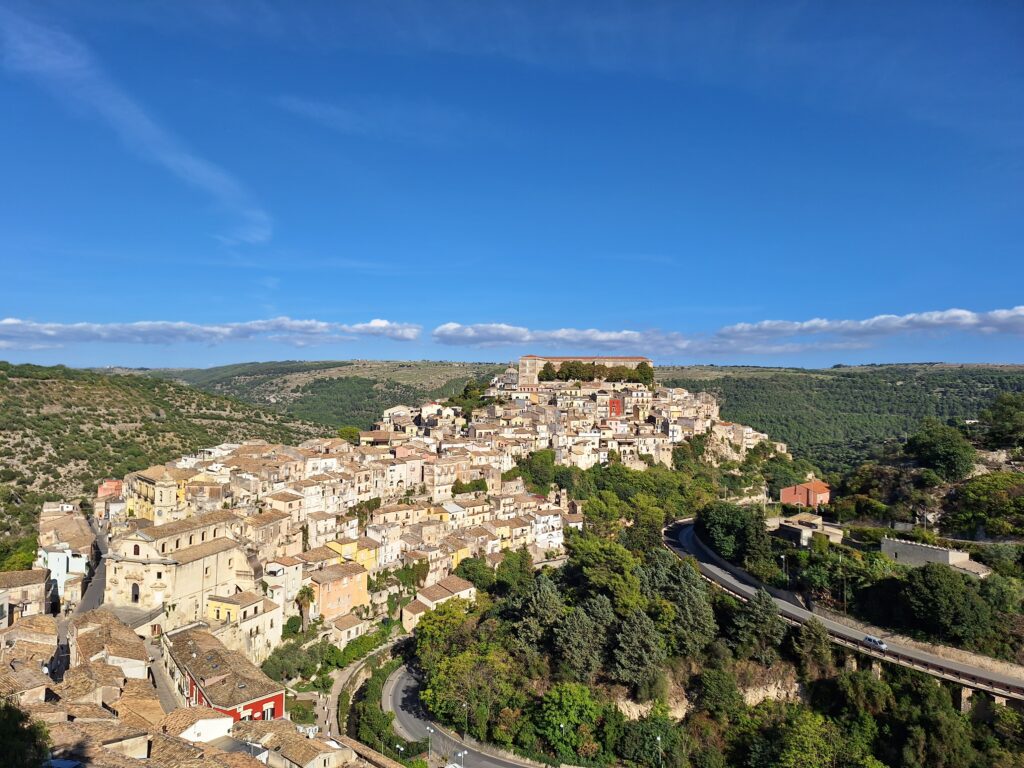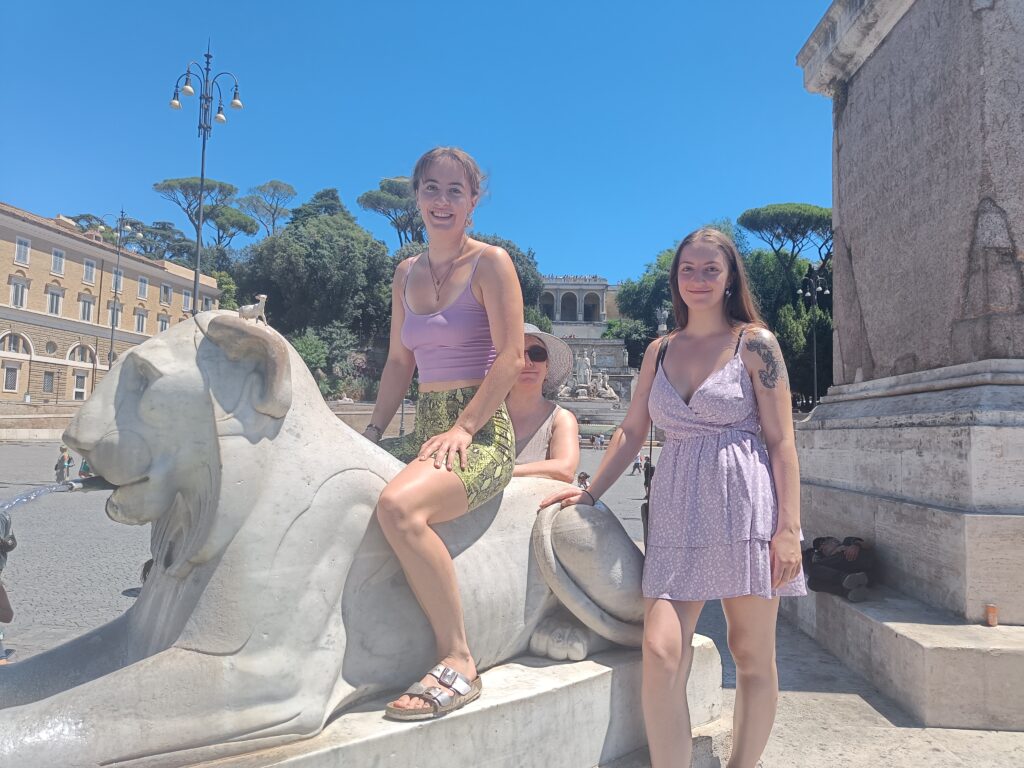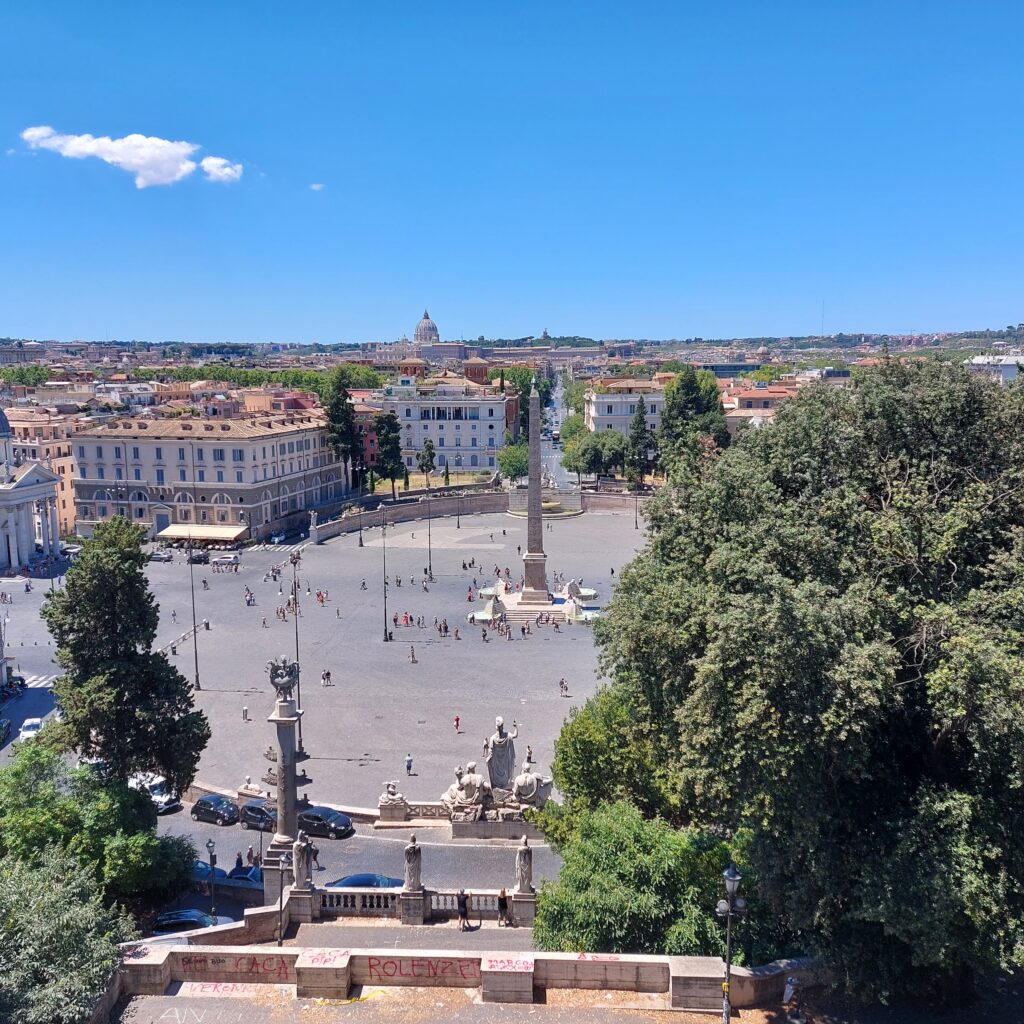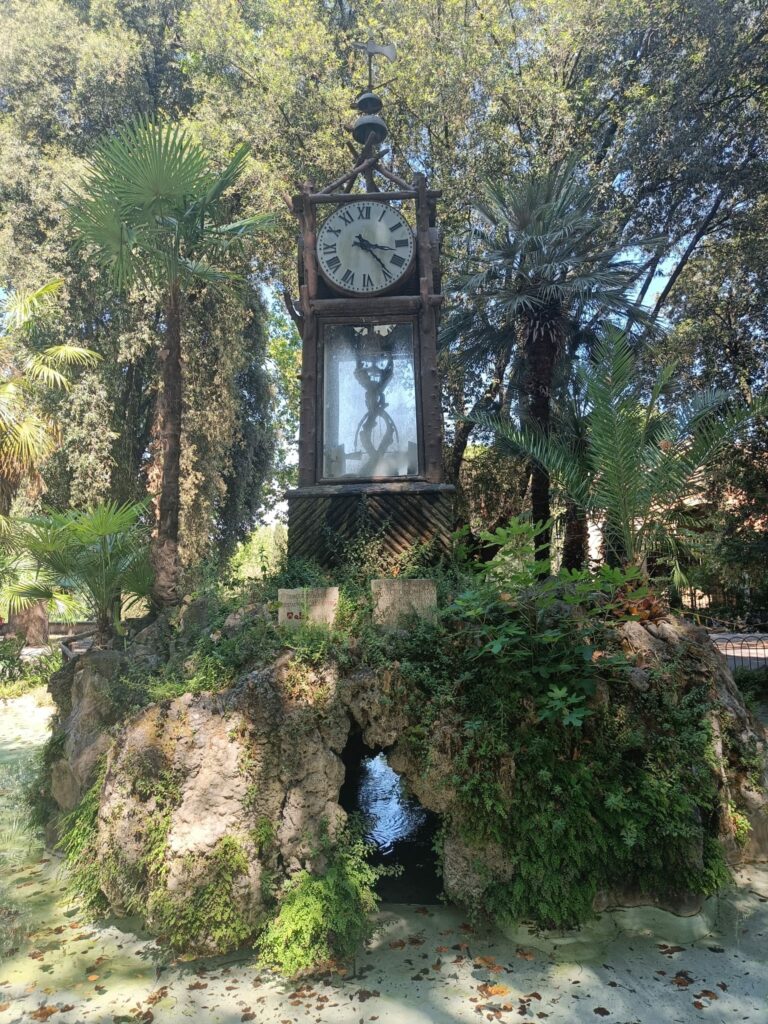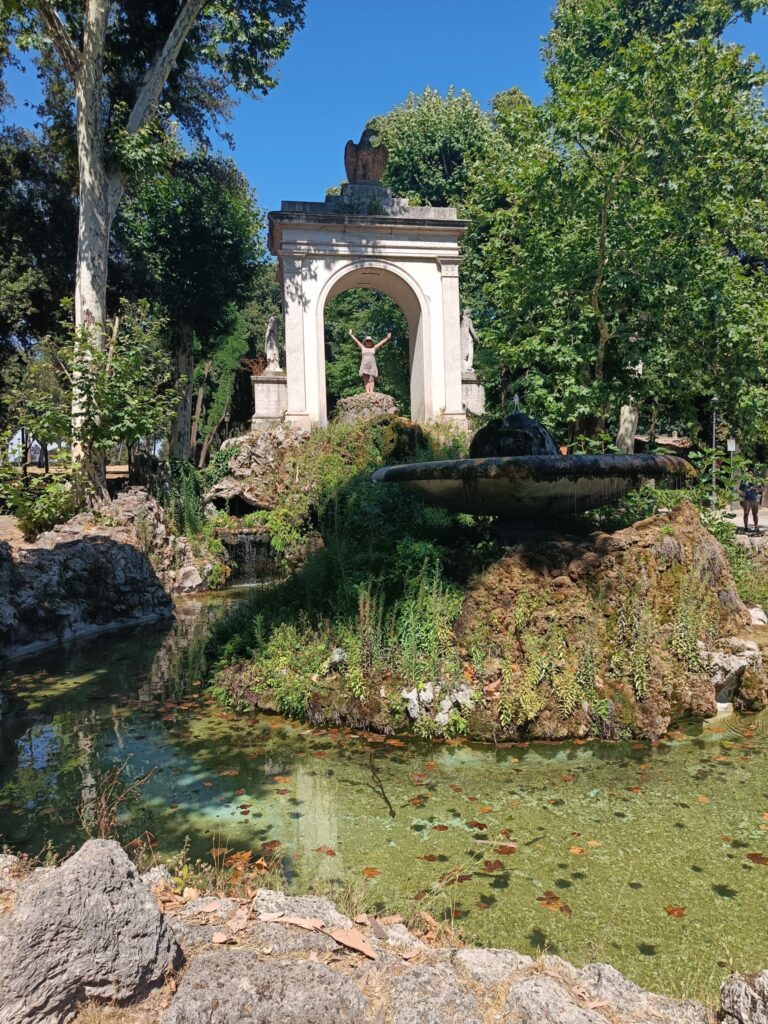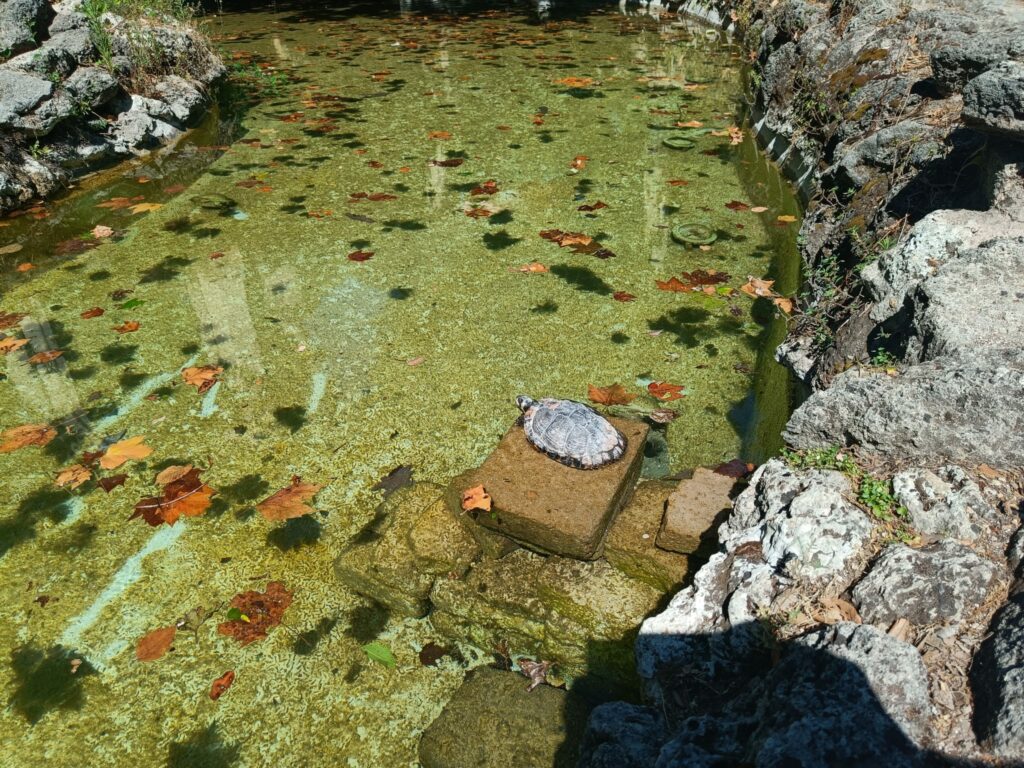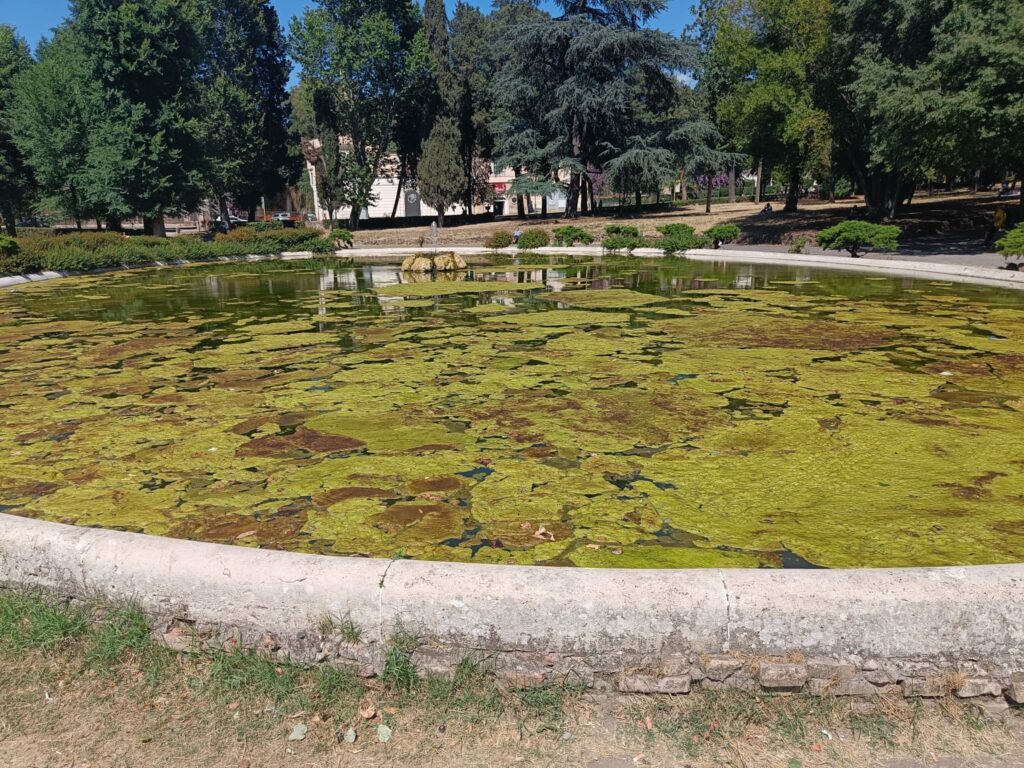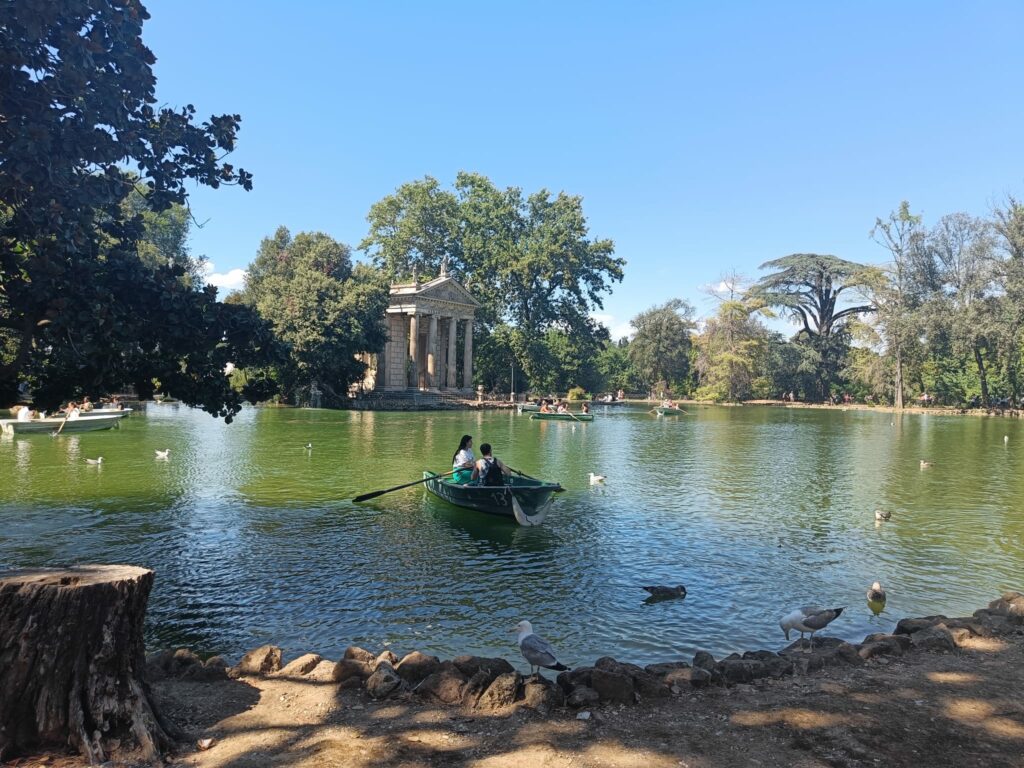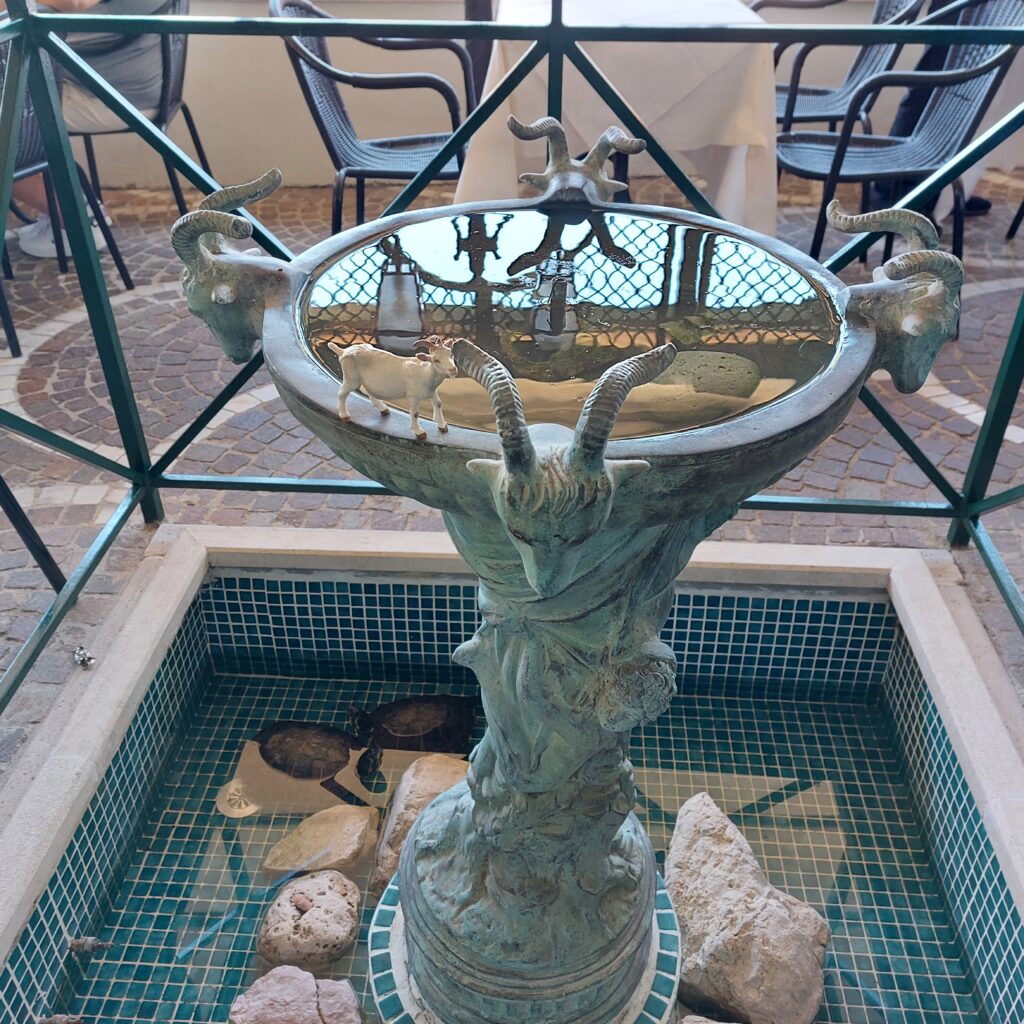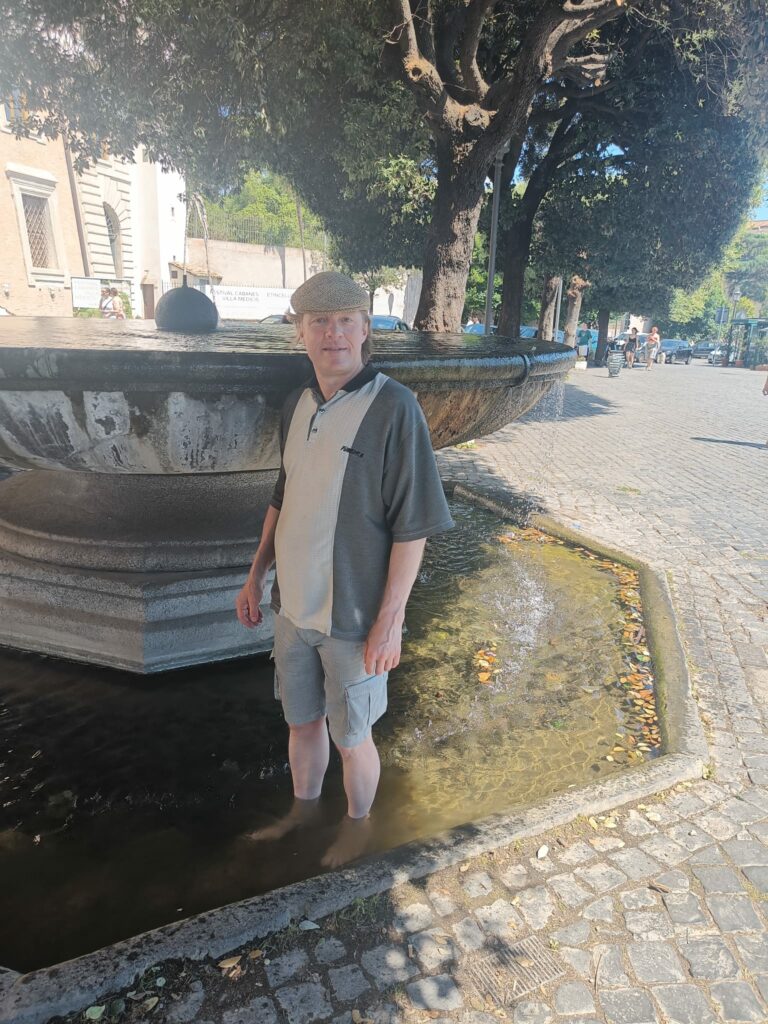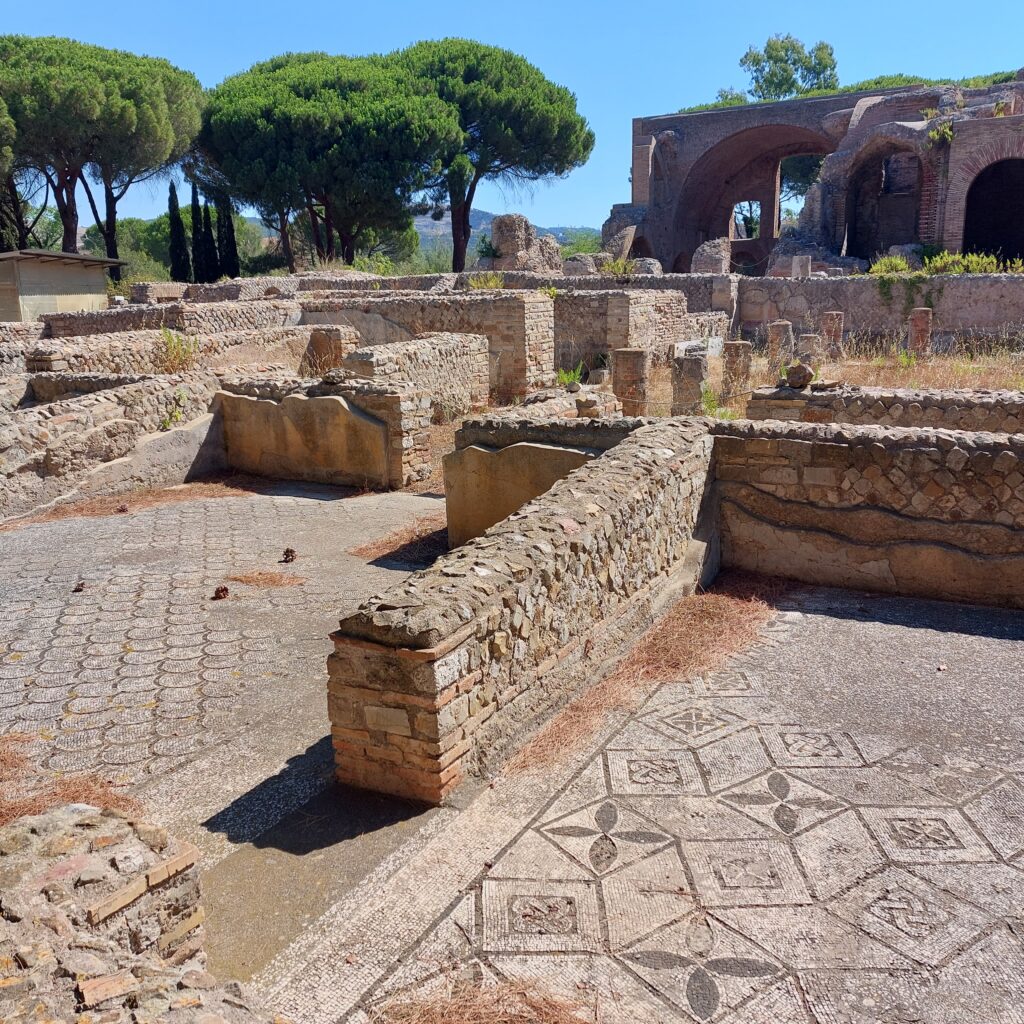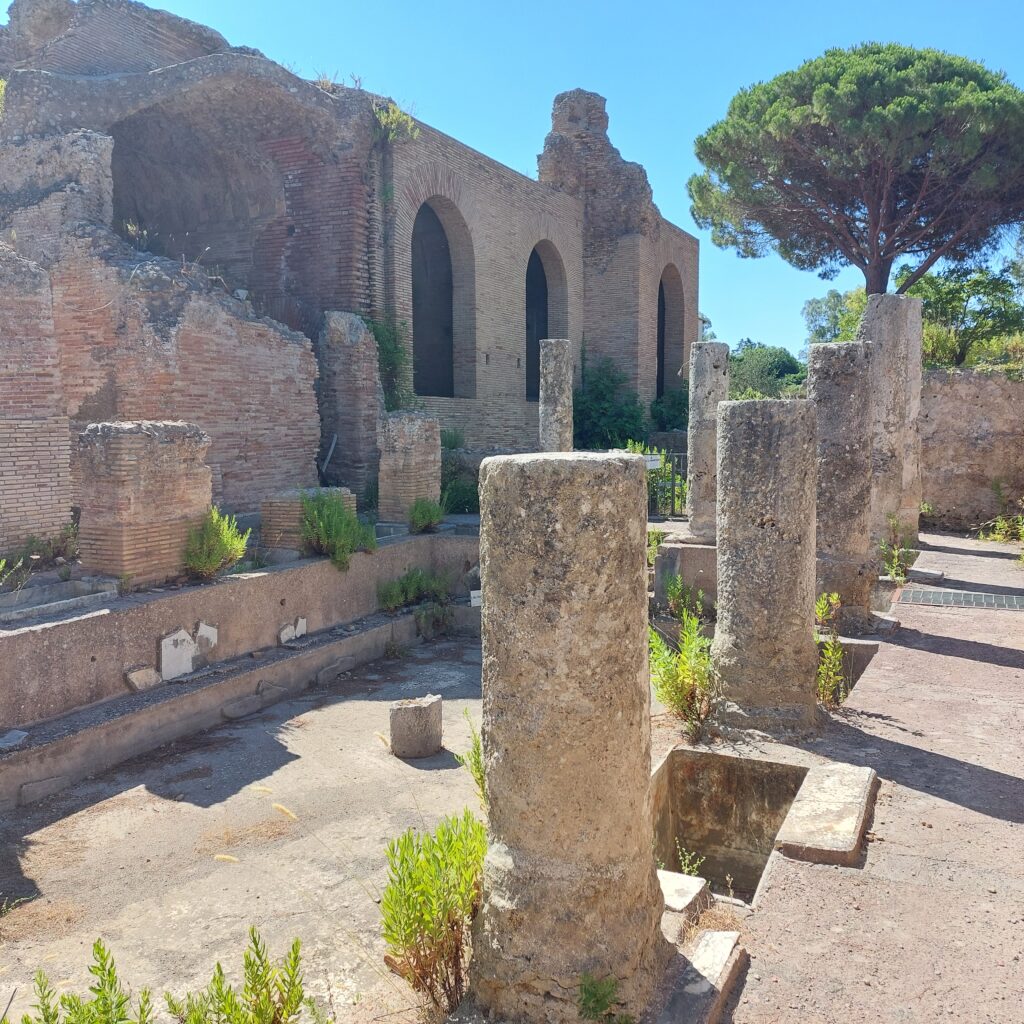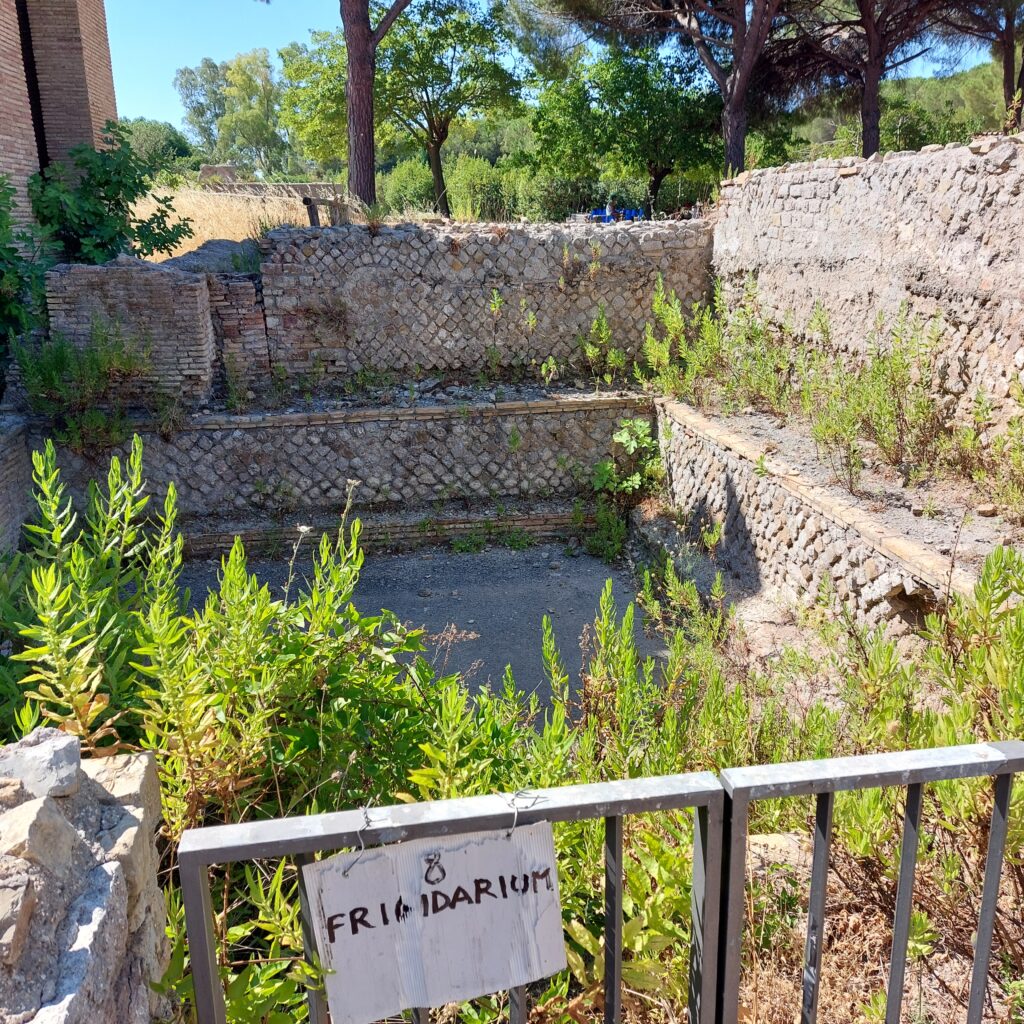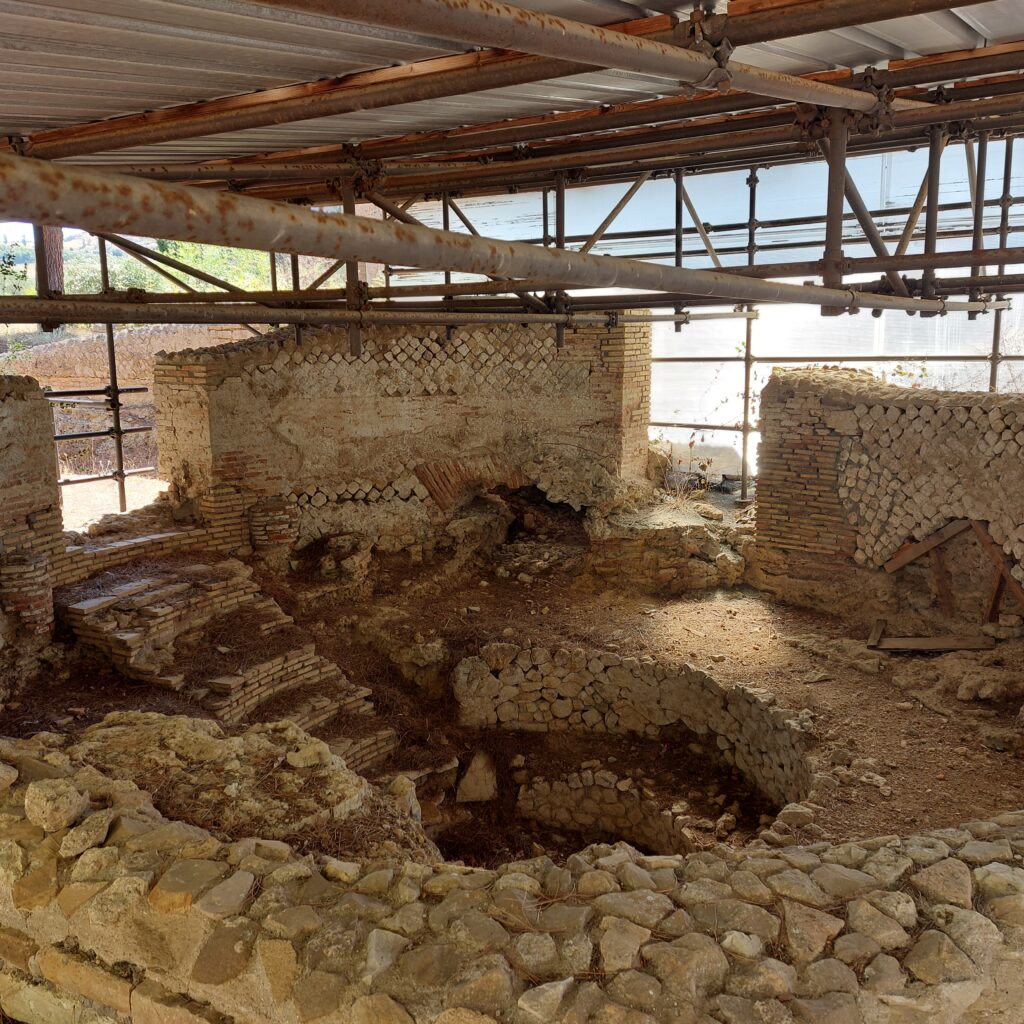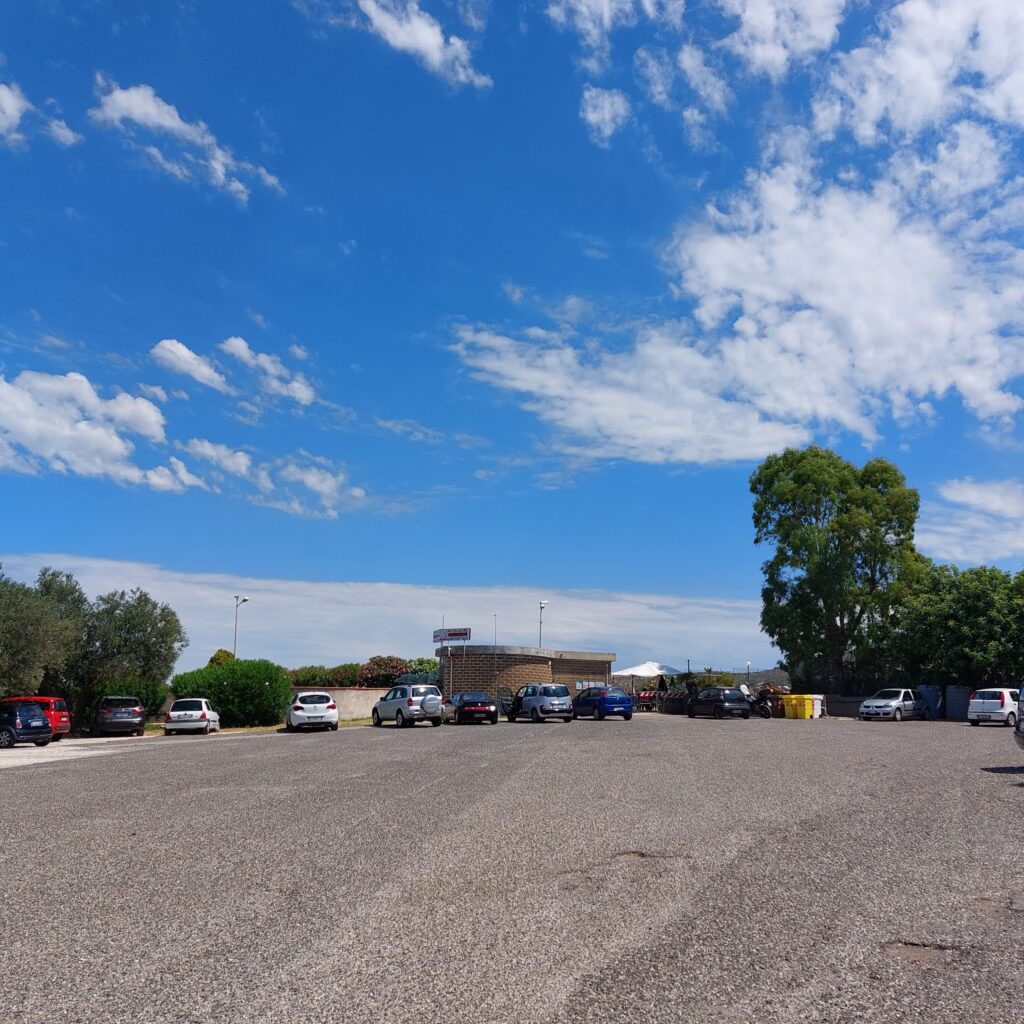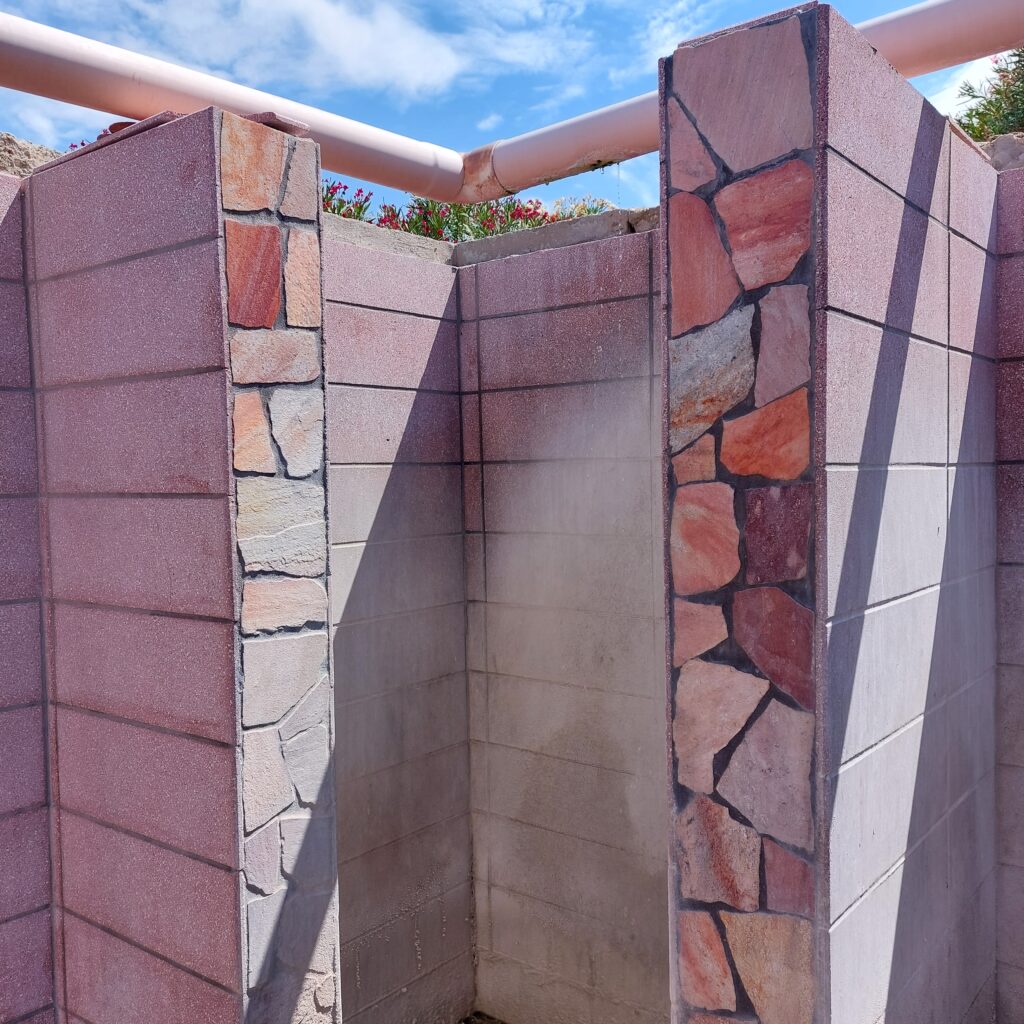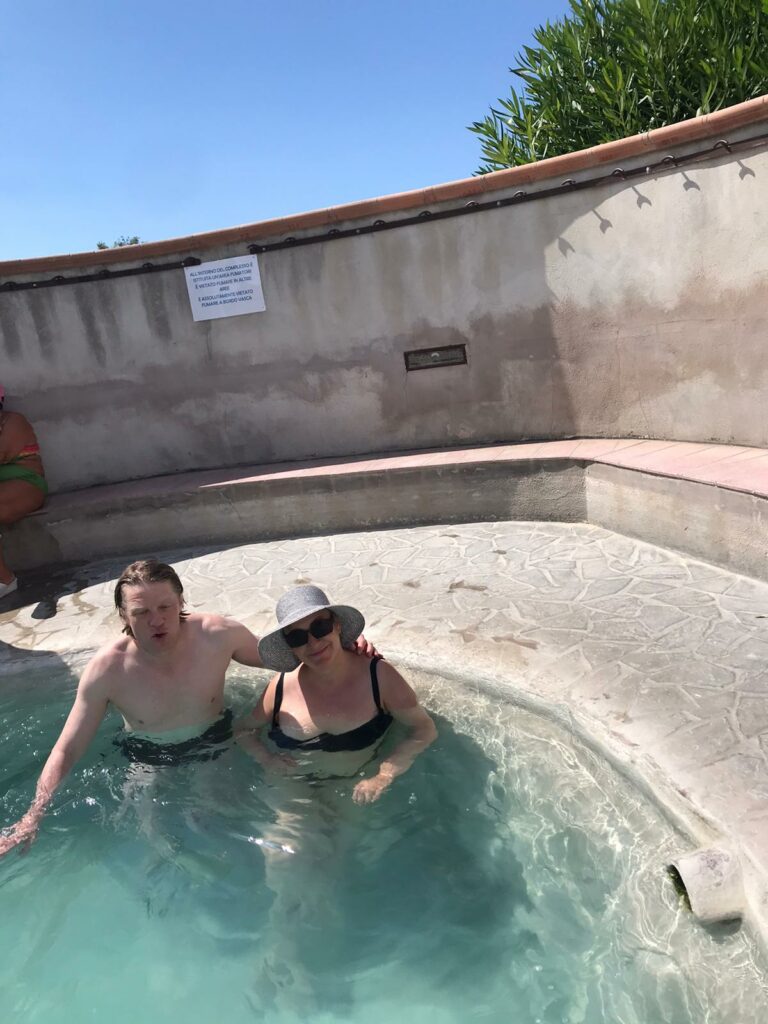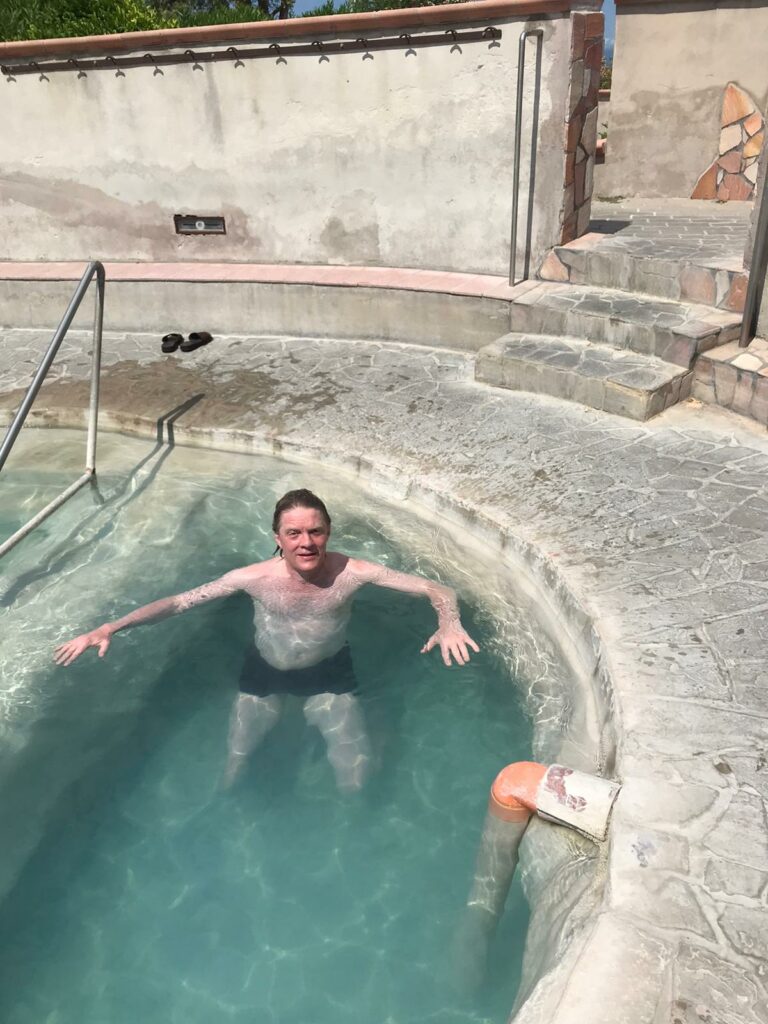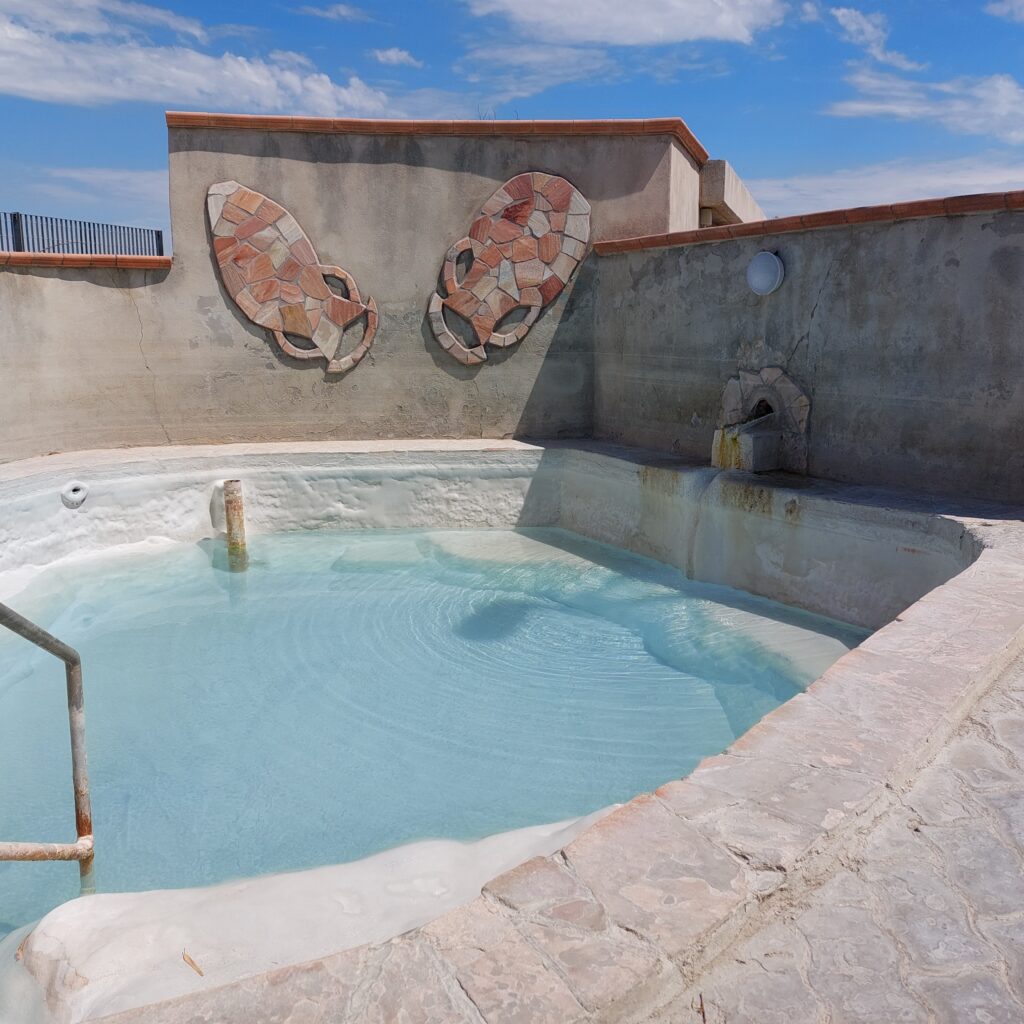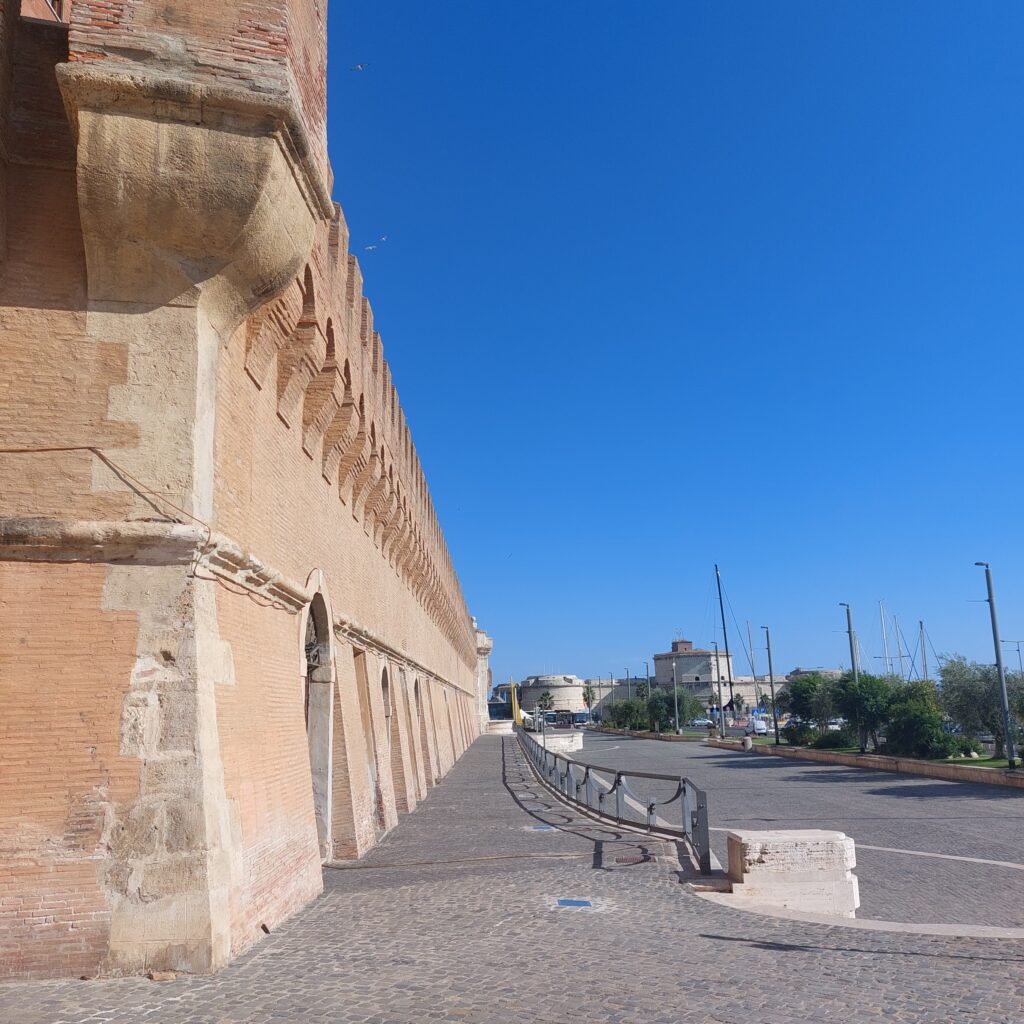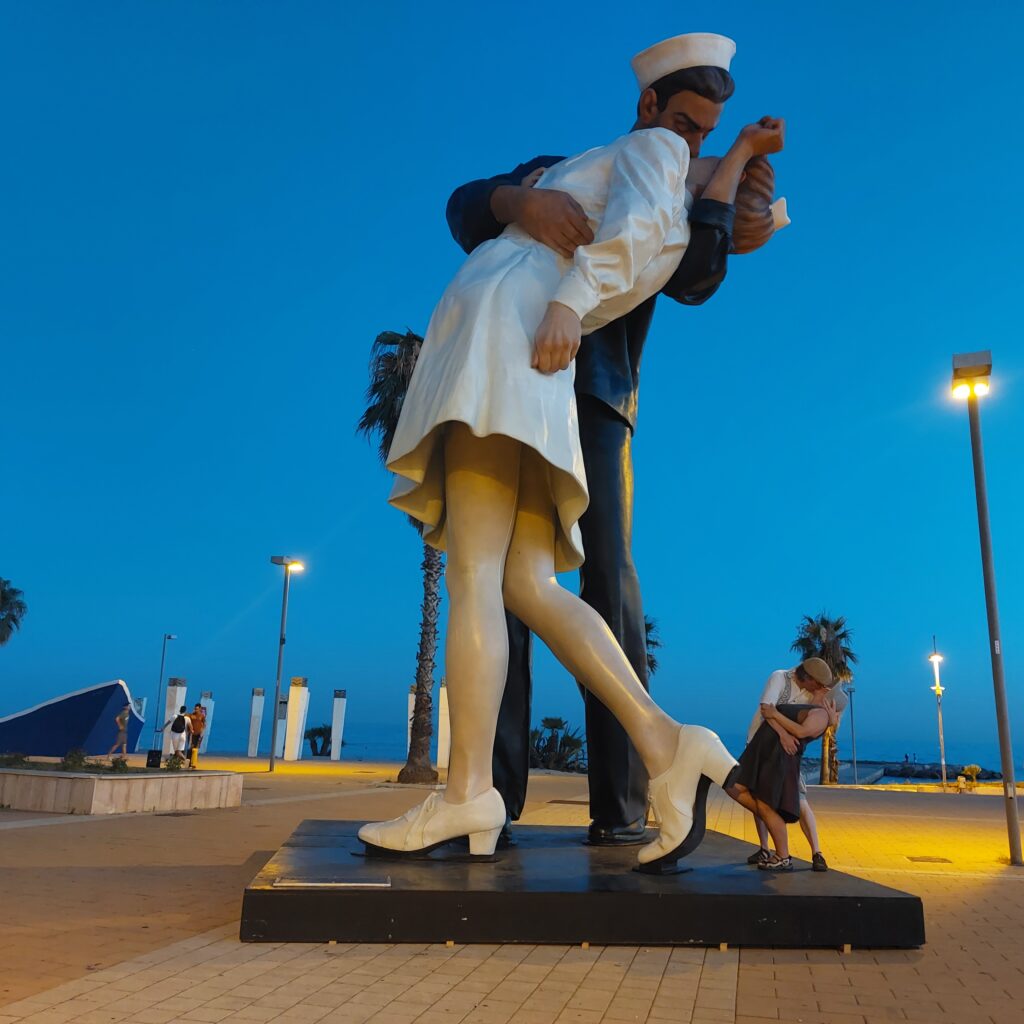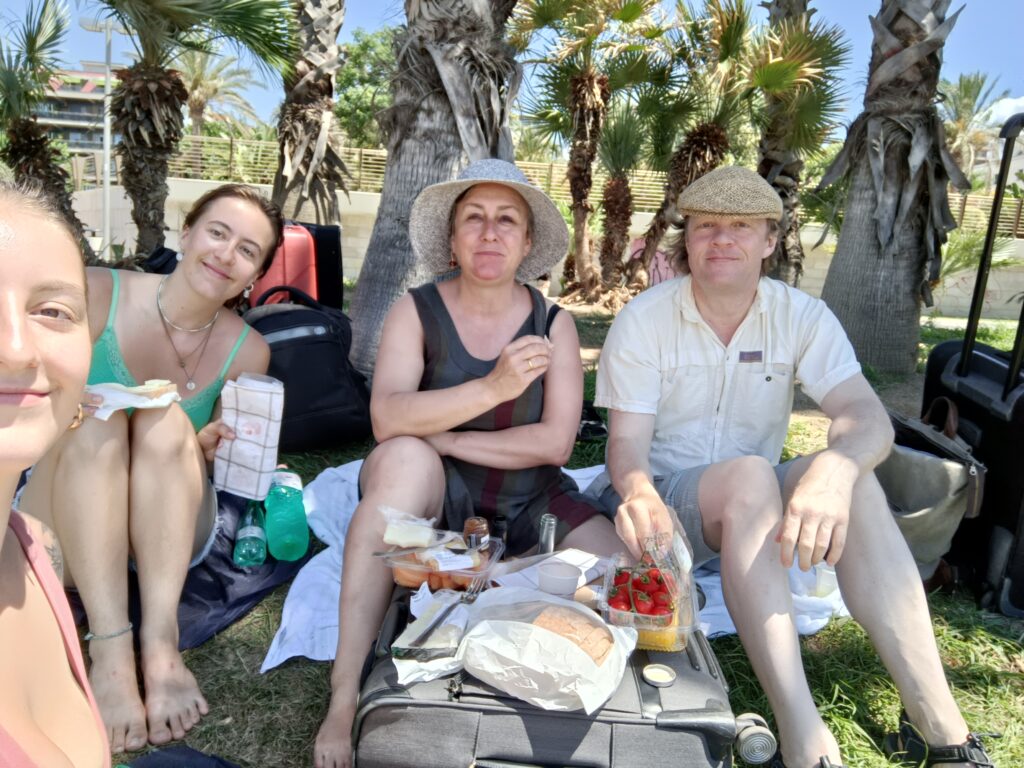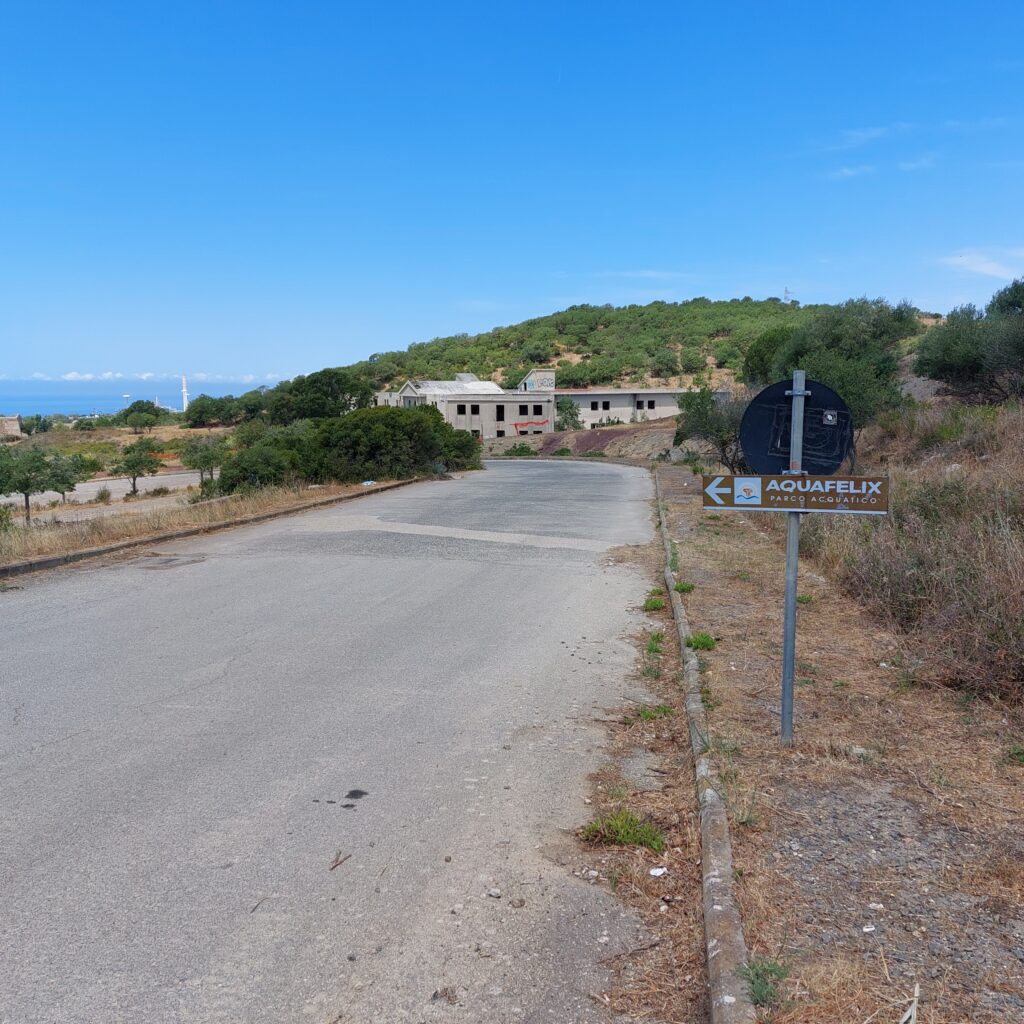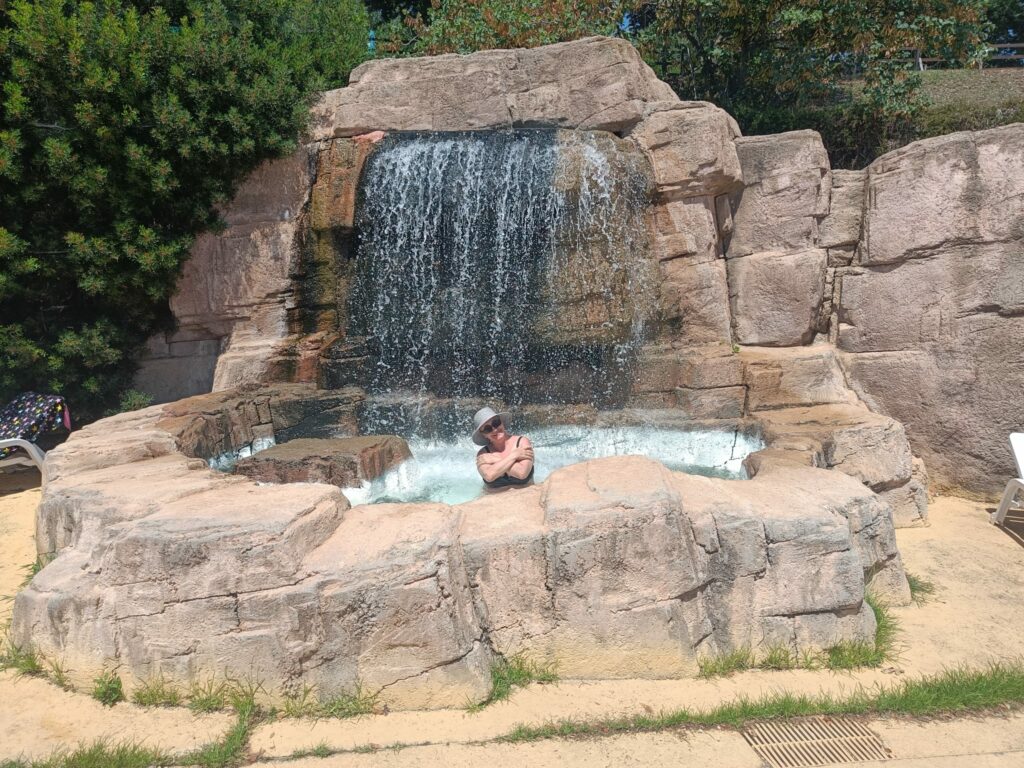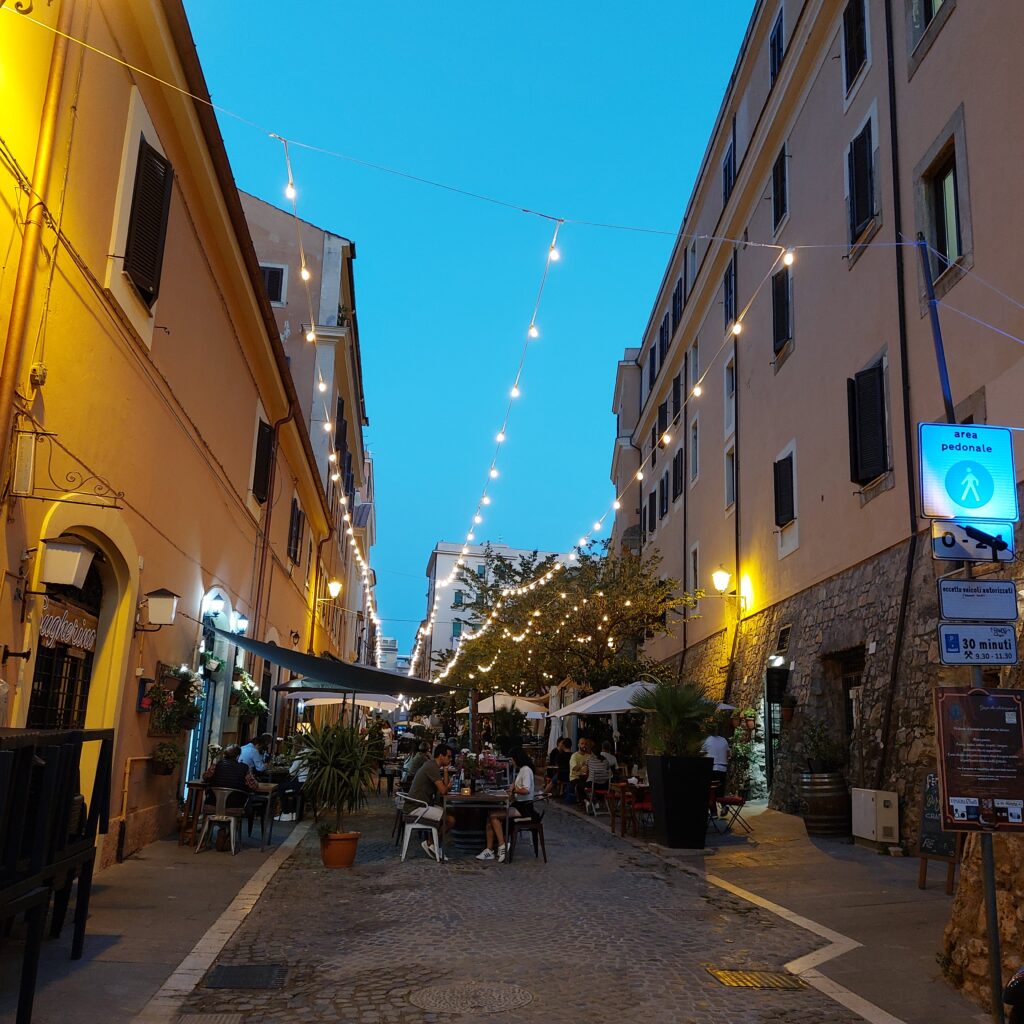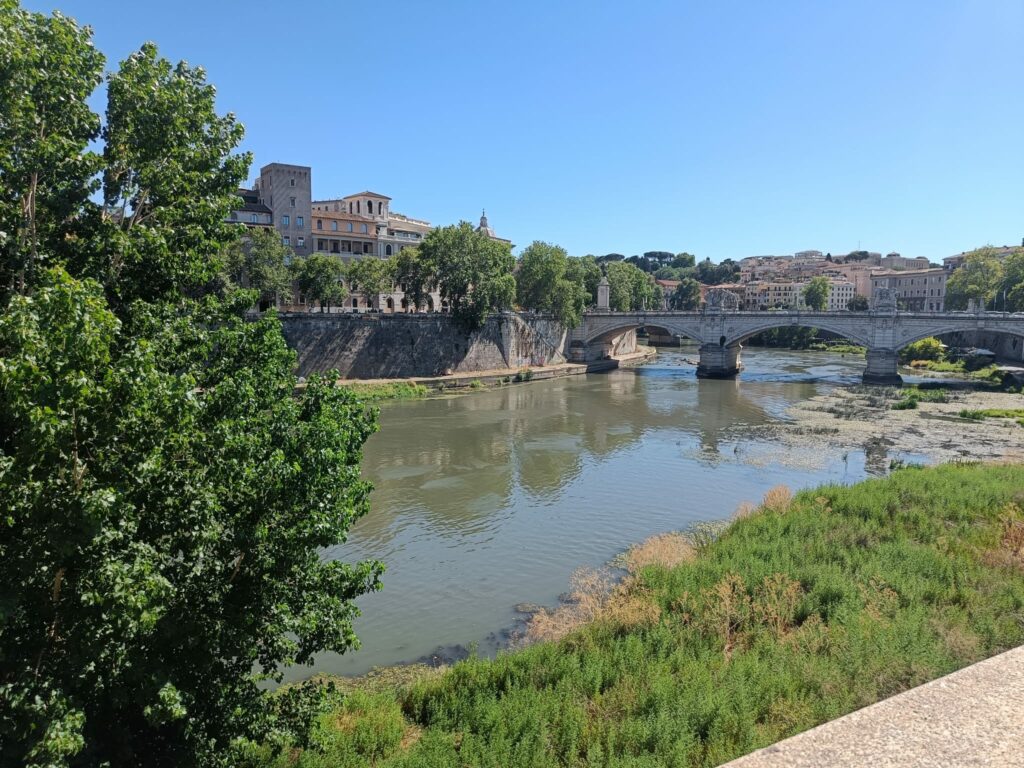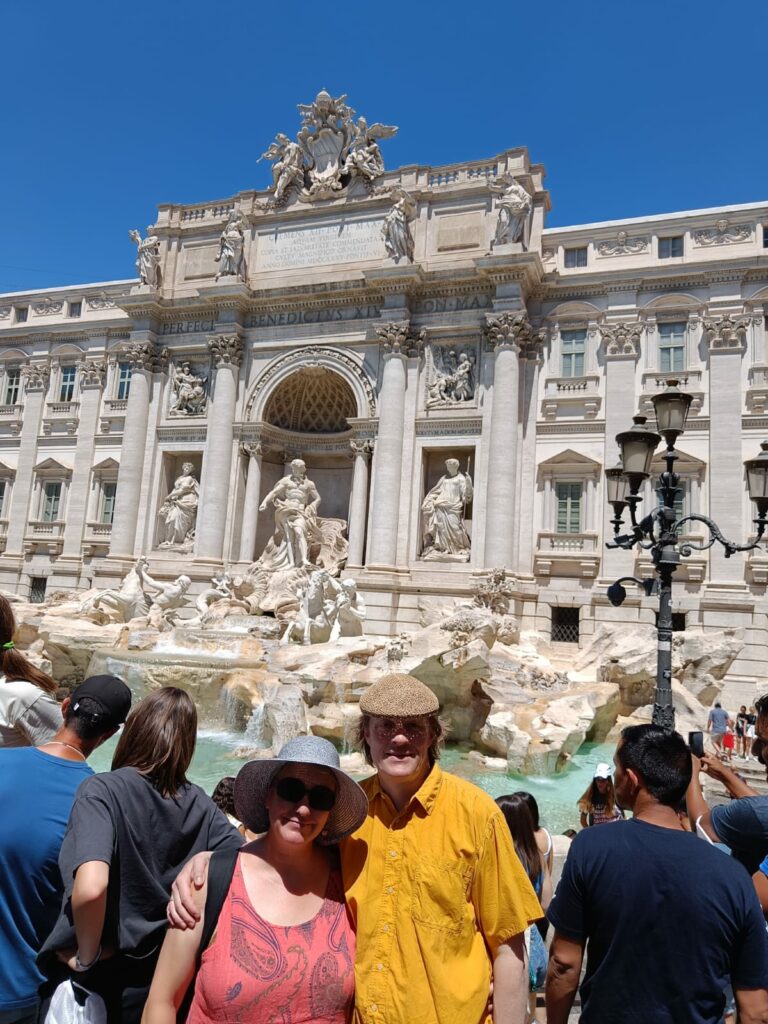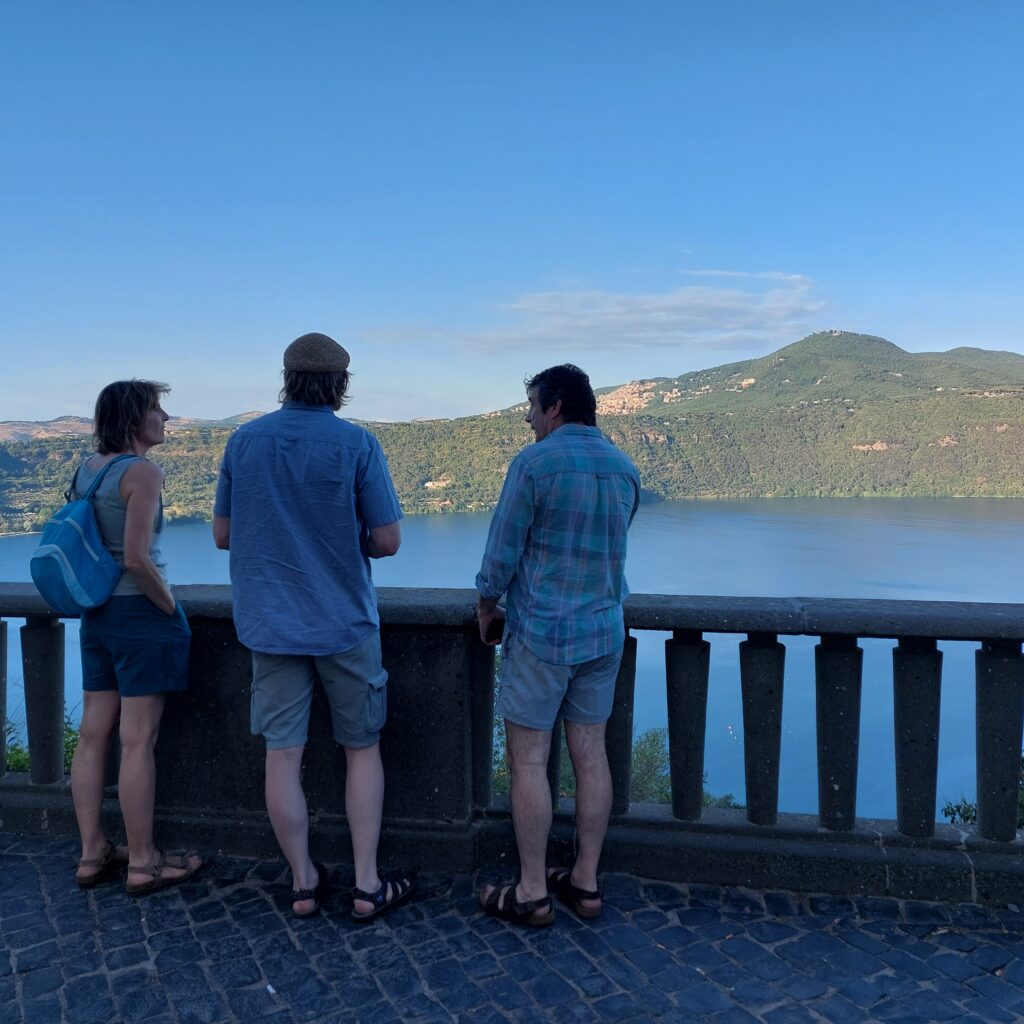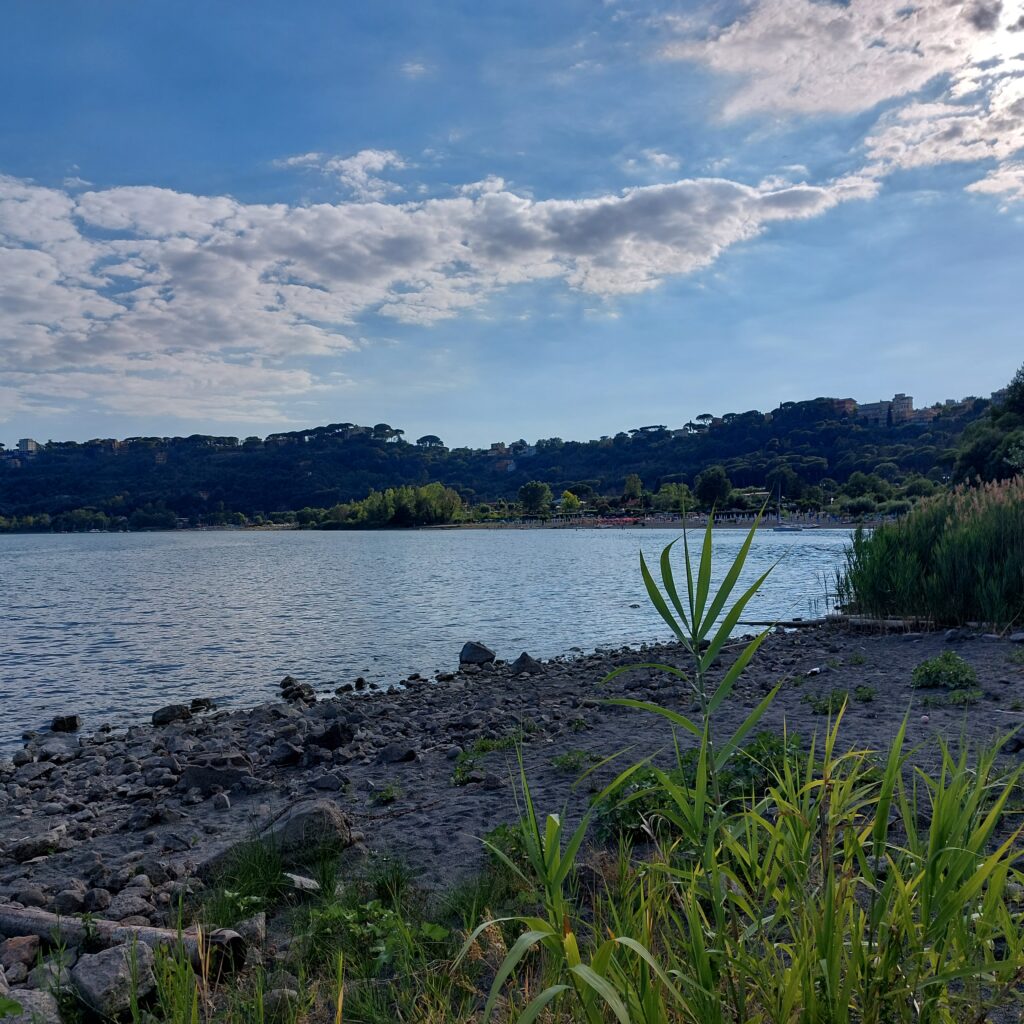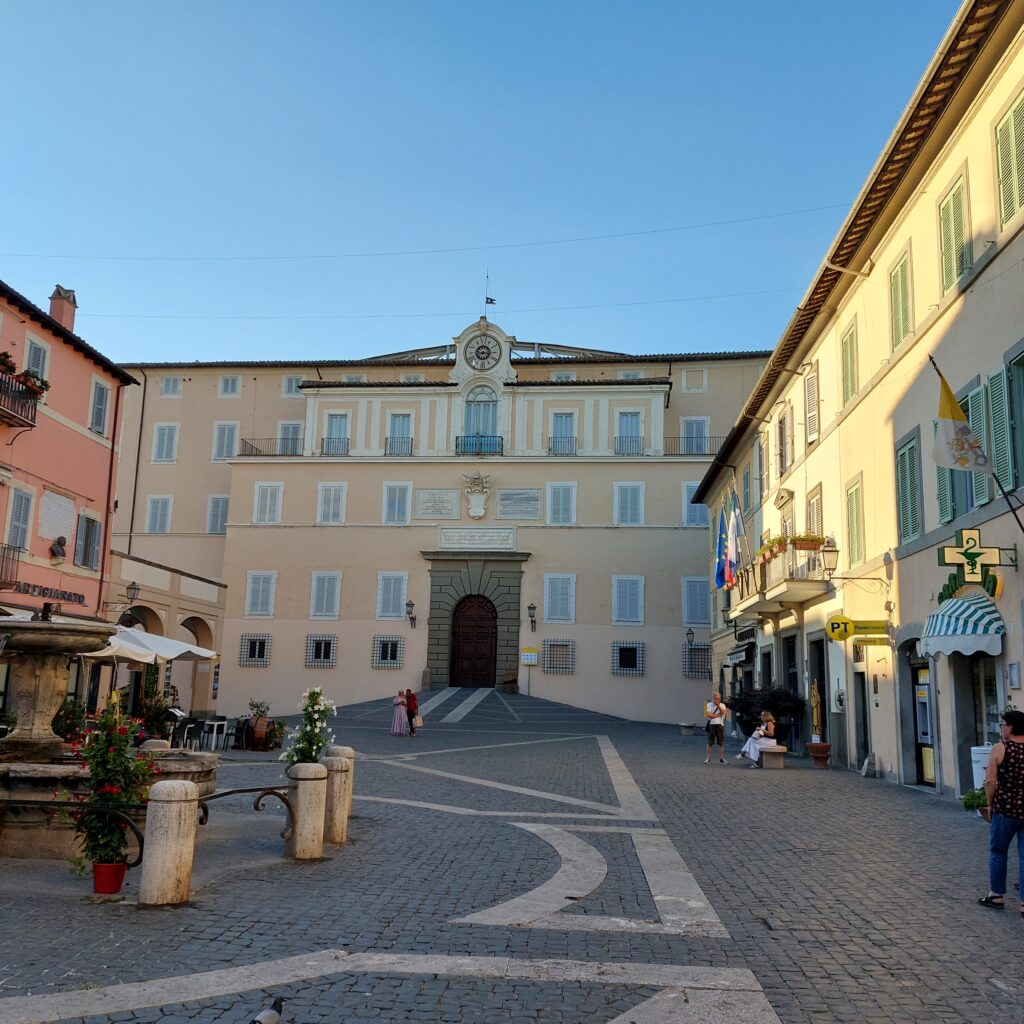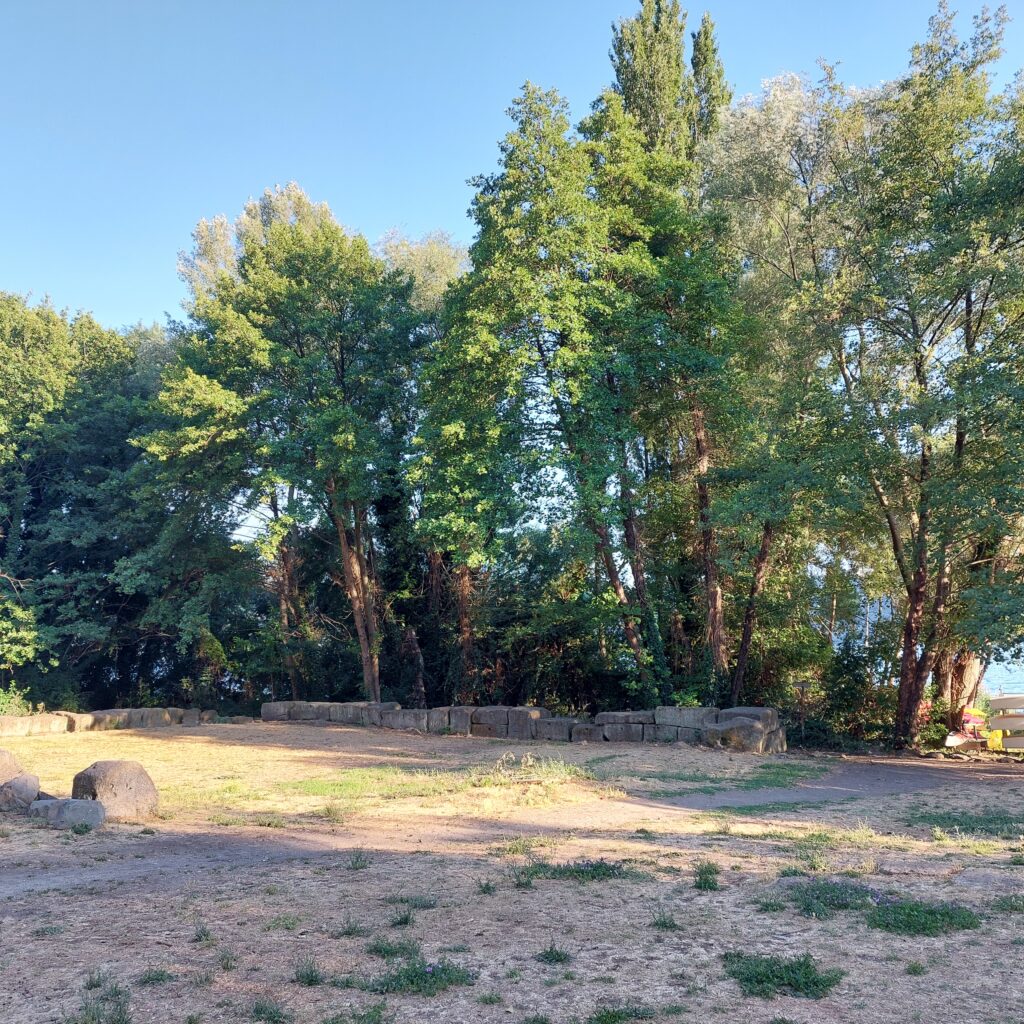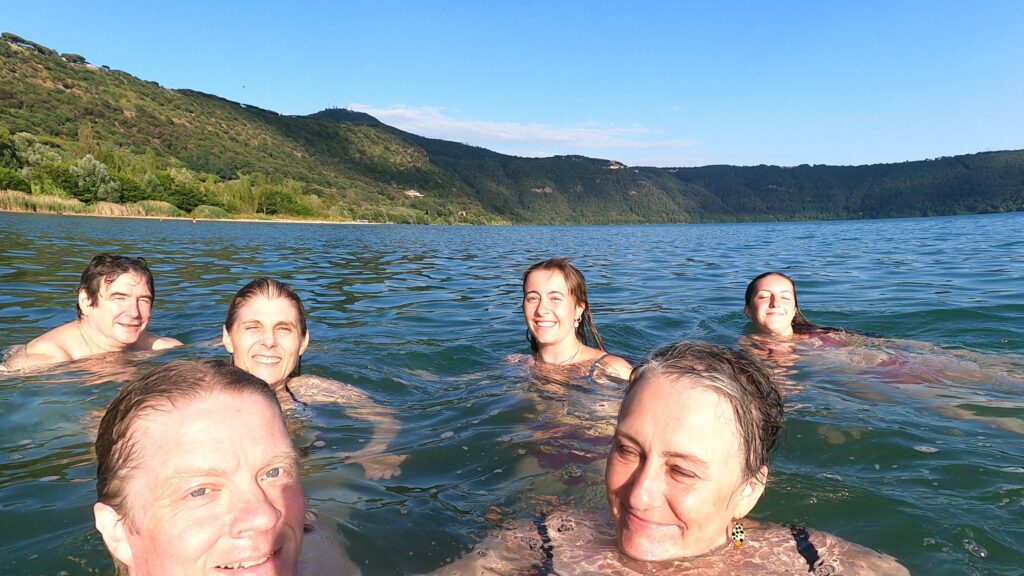Tobatheornottobathe is always looking for new and funny bathing experiences, but it is expensive in the long run to travel a lot. In order to keep costs down, we often live in private homes instead of hotels, and we sometimes rent out our own house when we are away (through HomeExchange.com). However, traveling from place to place and washing unfamiliar apartments when we leave isn’t the most relaxing way to spend the vacation. At the end of the 2024 holiday in Sicily, we therefore spent 2 nights at an ‘All Inclusive’ resort near the Palermo airport.

Well… it was basically nice, it really was. But you eat in a canteen, not really in a restaurant, and after a short time you realize that all the food tastes similar.

The resort was nice and clean and quiet (October) and had lots of facilities. All the staff spoke English well, to be honest we had to admit that their English was better than our Italian! Very very annoying indeed…

But once you’re actually situated at a resort like this, you have to make the best out of it! Very unusual for the Tobatheornottobathe: We did do sunbathing, almost one hour, and afterwards: exercise in the 50 m long pool. Big surprise! The water was cold and fresh. We expected sea water, but no. A really nice place to swim.
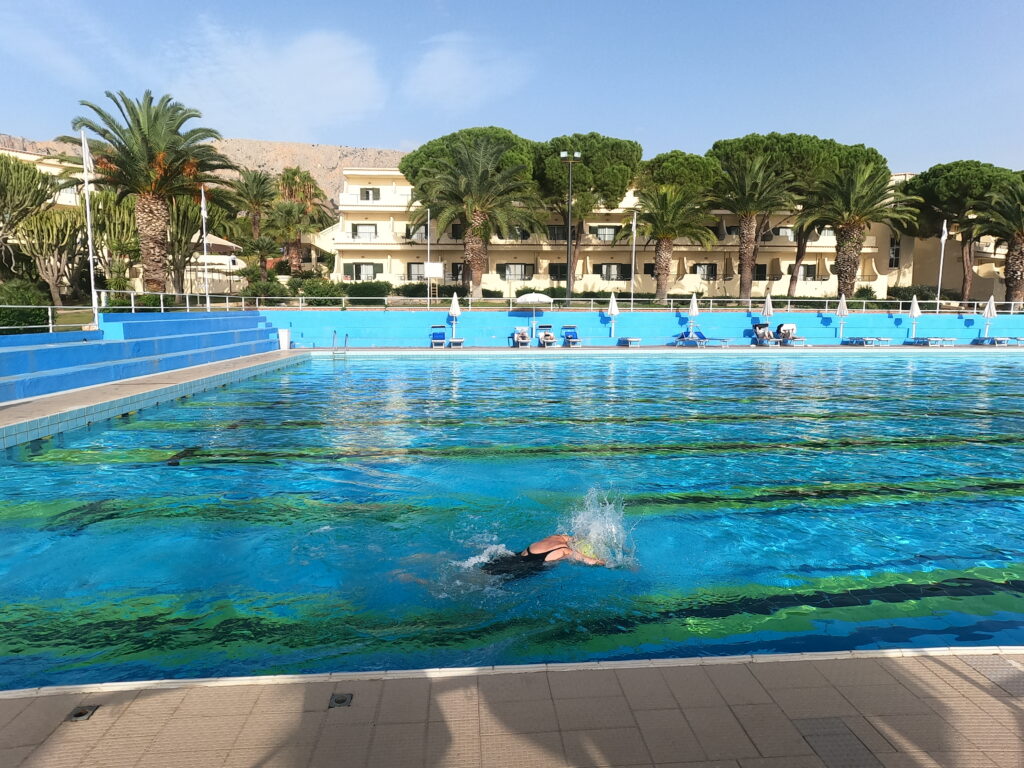
After exercise, time was just right for the slides! Idun had seen a picture on fb, showing slides in 4 levels. YES! This was really fun. The slides are short but steep, so the speed gets quite high.
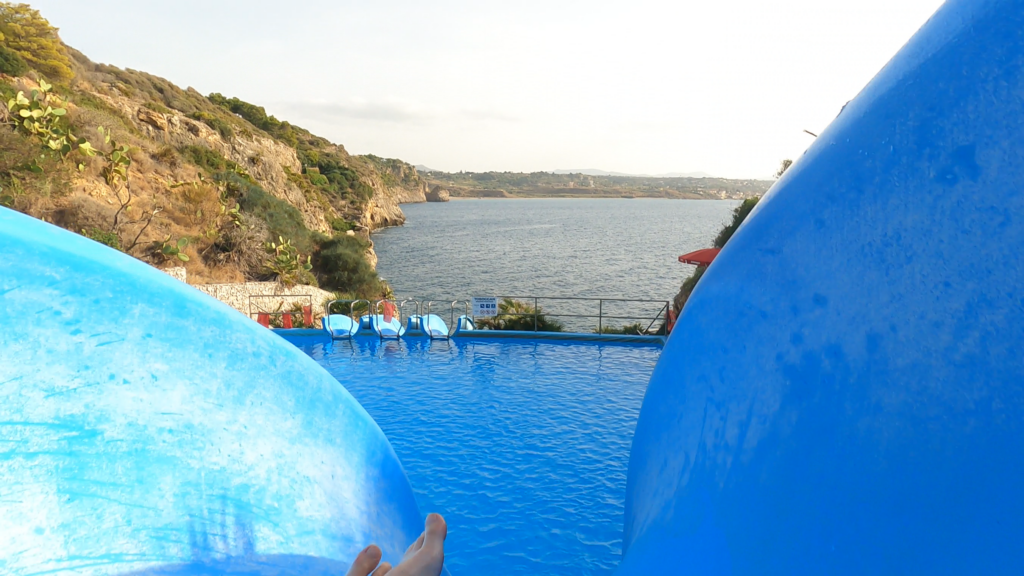

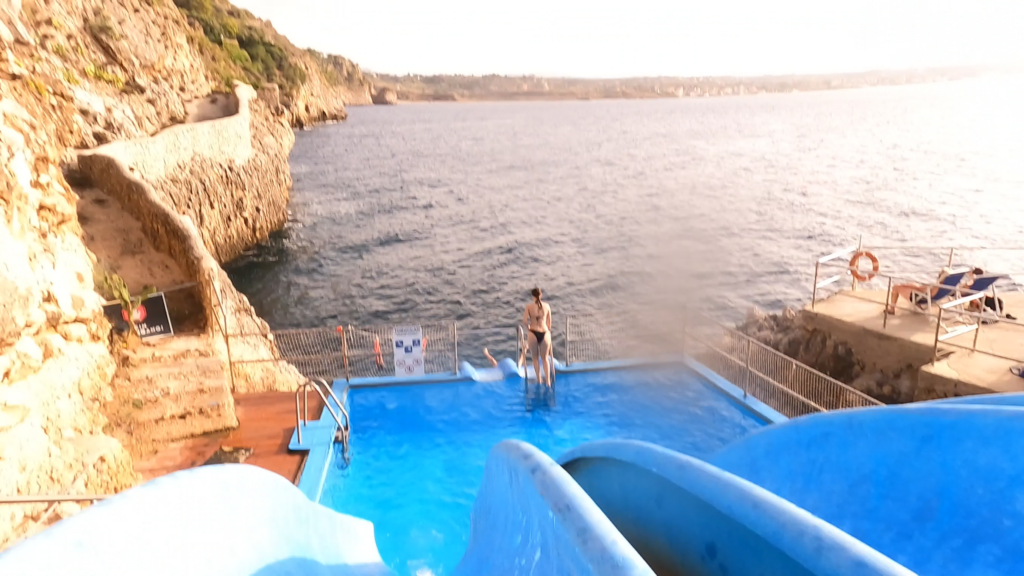
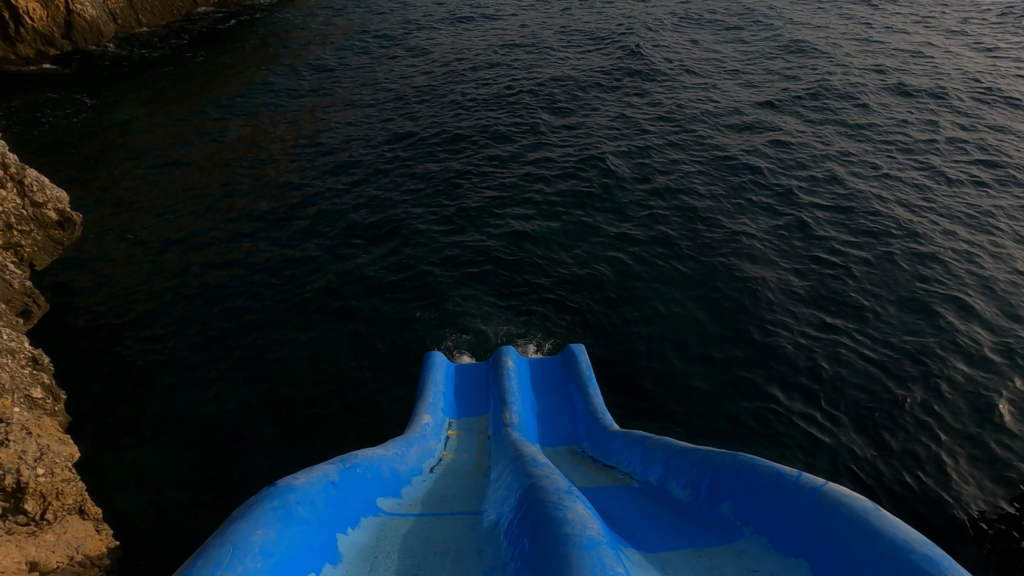
Brilliant!
At last down in the water, we know now that we weren’t alone! We didn’t know it then, but one camera in the hand was one while we were swimming. This guy and his buddies seemed to be used to strange creatures plopping in from outside their world.
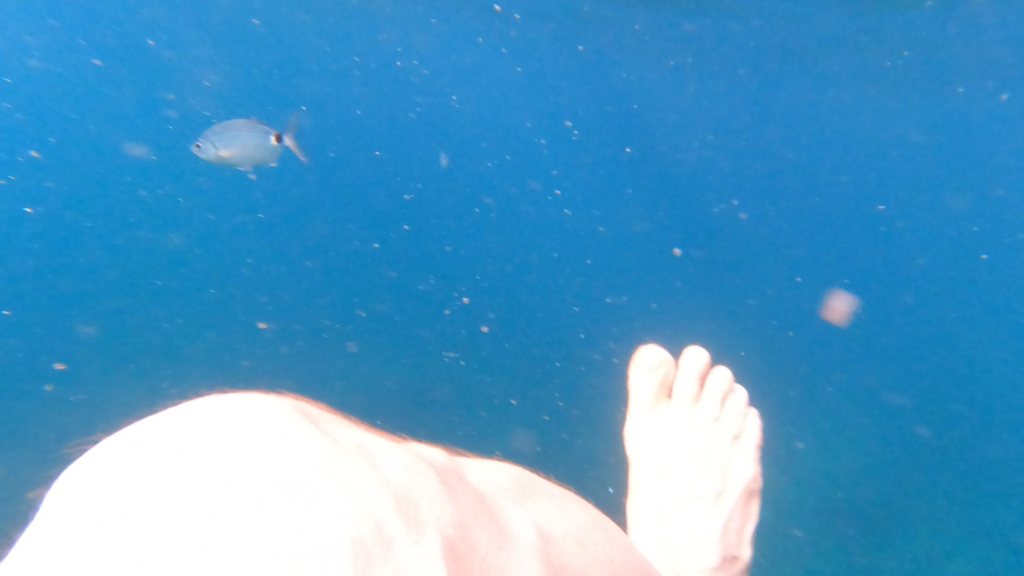
You can spend a lot of time at the toboggans, and if there are young people in the family, you can expect them to hang out here all day long. There were a lot of warning signs, of course, but this one was maybe a bit over the top?

However, Badebade did not end the day by the taboggans. After riding the slides a few times, maybe it would be nice to enter the water the normal way too? The resort area was rather steep, with poor access to the sea. To enjoy the beach life, you can join a minibus to the nearest sandy beach – not accessible from the resort area.
Well, they have installed stairs down to the sea, so there is access. This night a bit scary because of heavy wind in the sunset.
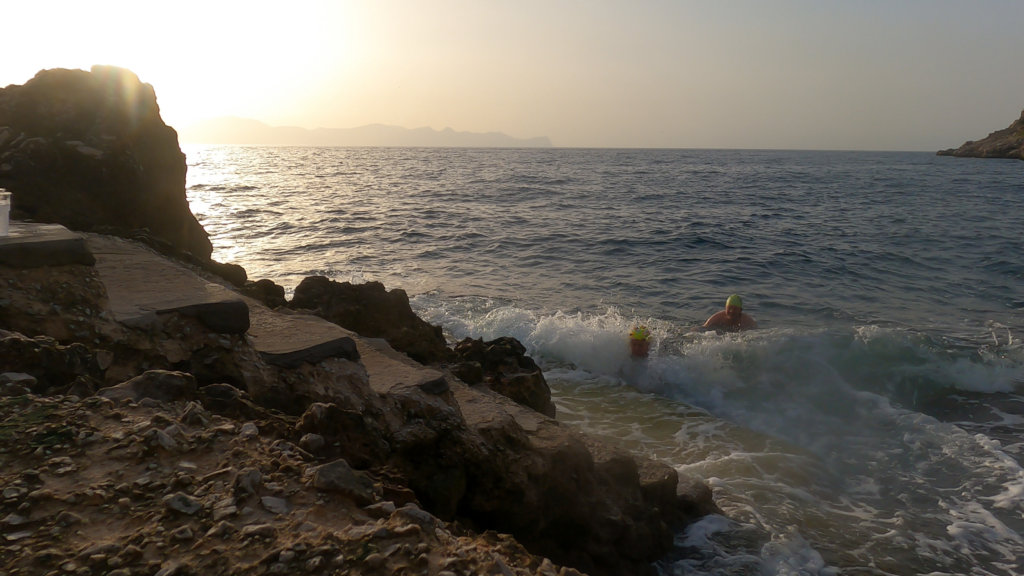
‘Huh, that was exciting, but fun!‘ Idun said. A little later: ‘I have a strange feeling. One of my feet is sore. After wearing the same sandals every day for 3 weeks, I suddenly get a chafing today! How is that even possible?‘ It was not water from a chafing wound, it was blood from an unpleasant encounter with a rock on the shore.
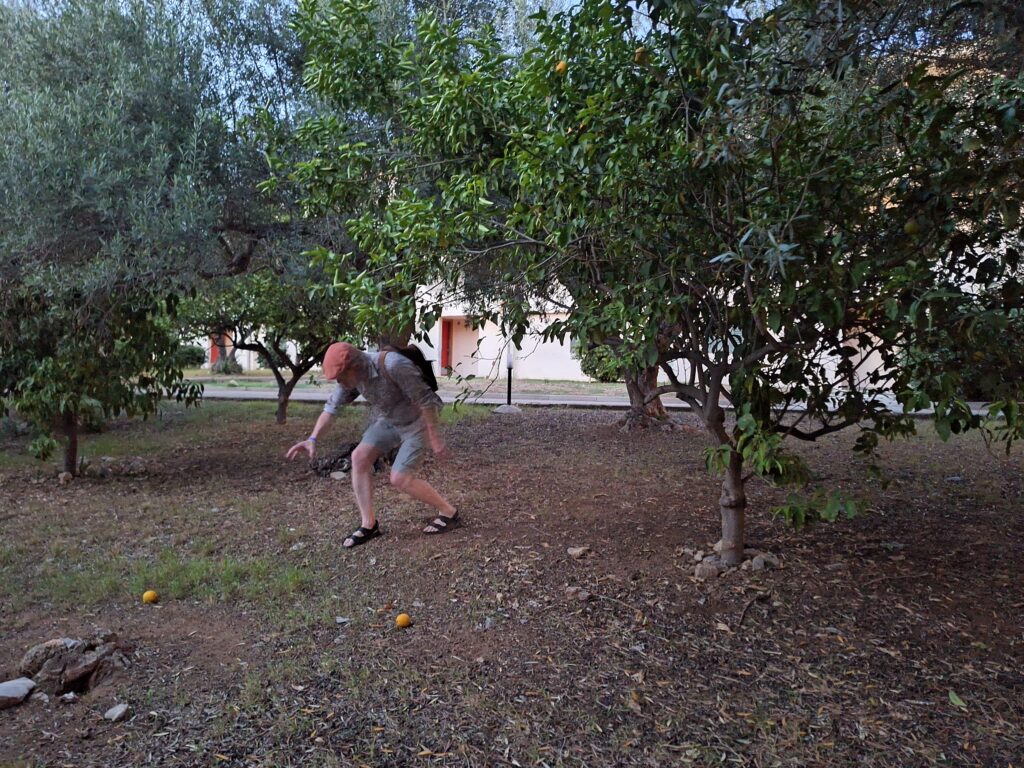
After an otherwise super day in the water, it’s nice to round off with mini golf. Since we were off season, we couldn’t find an open bar and decided to make the refreshments ourselves. With untravelled lemon!
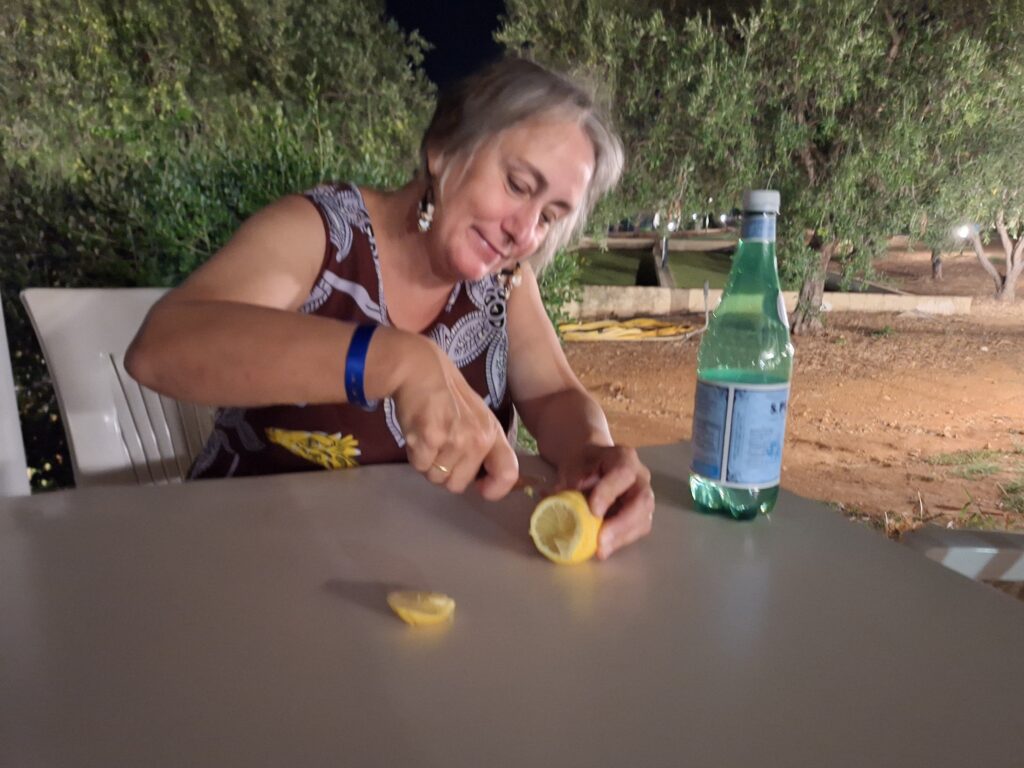
Conclusion? It was relaxing to do an ‘All Inclusive’! But recommend it? No and no again, we certainly won’t do that. On vacation you should always stay in ordinary neighborhoods and leave your money in small, local businesses. It is much more fun and better for everyone. Basta!
